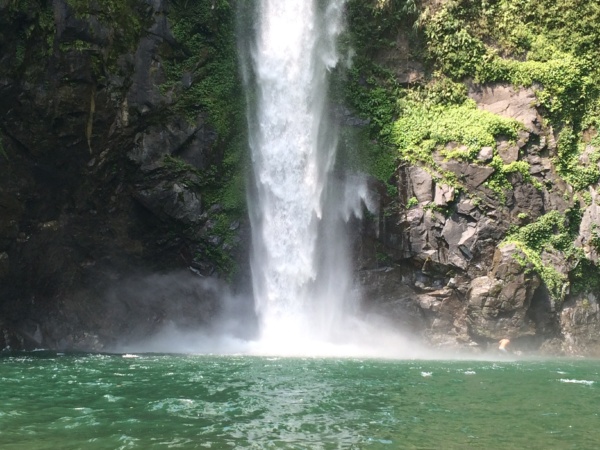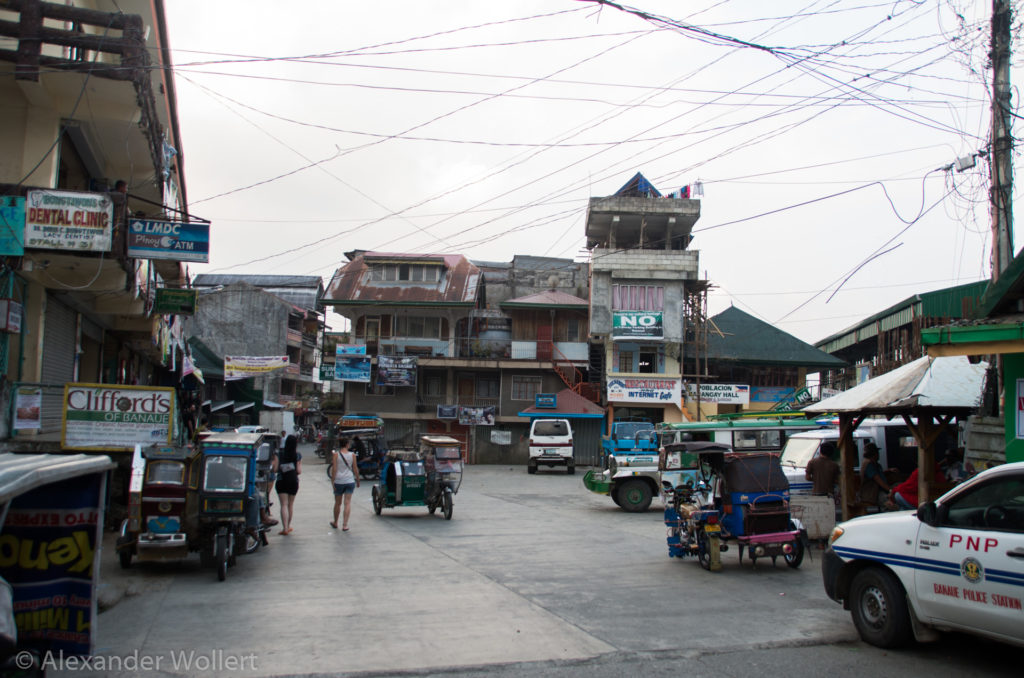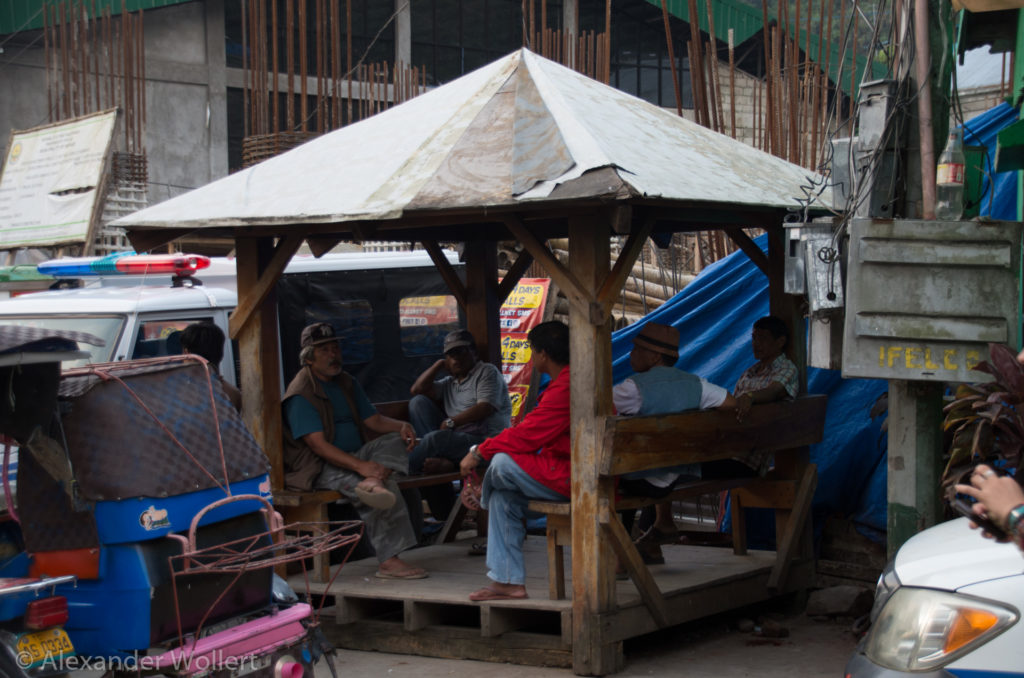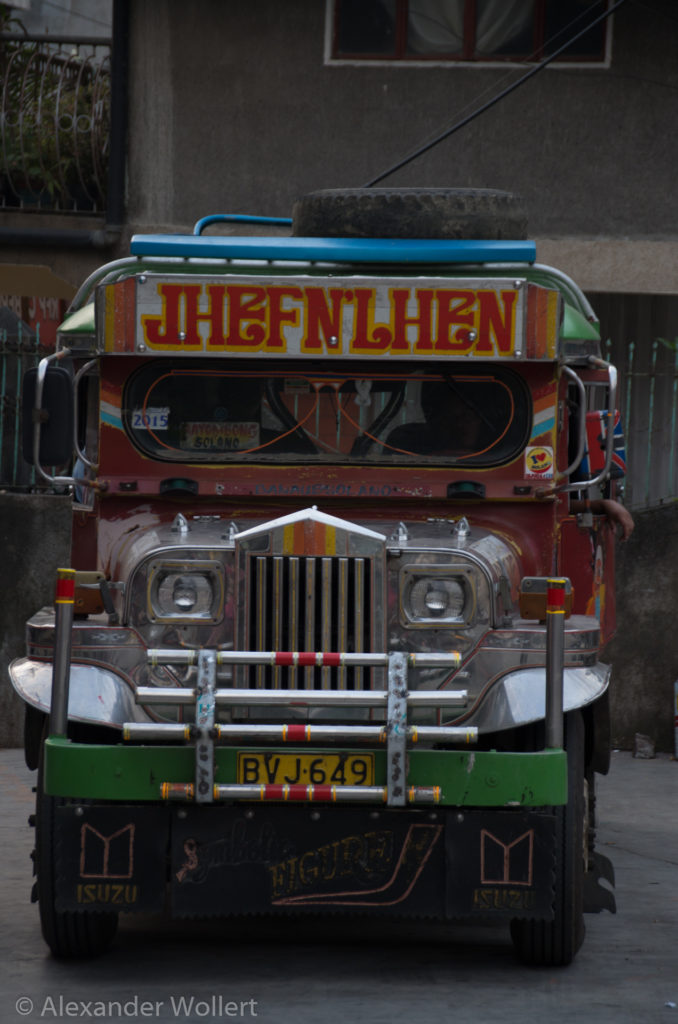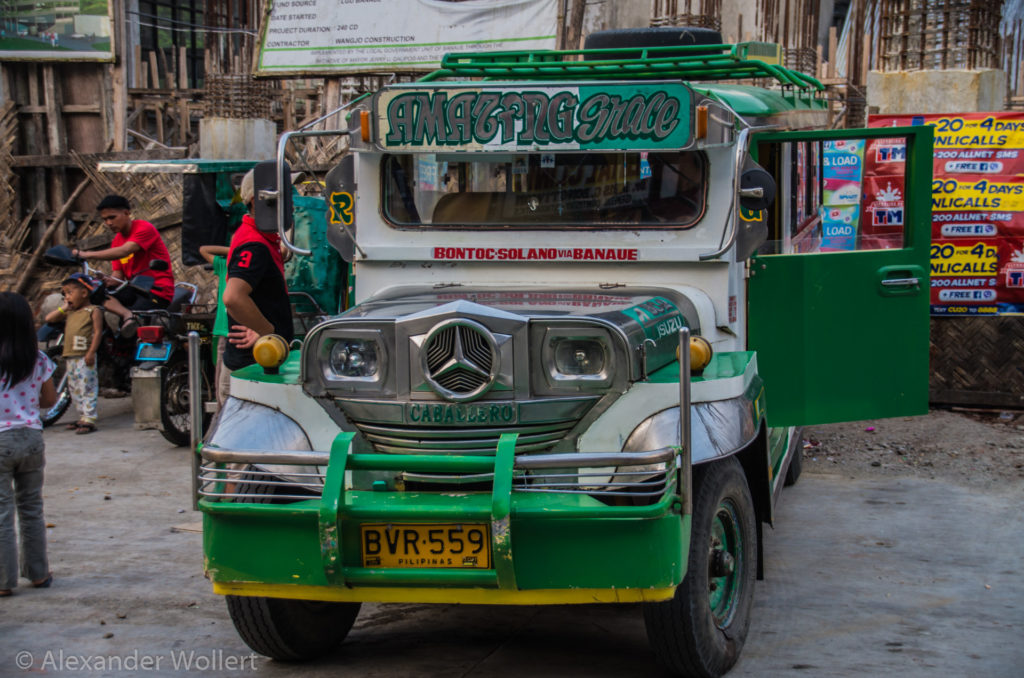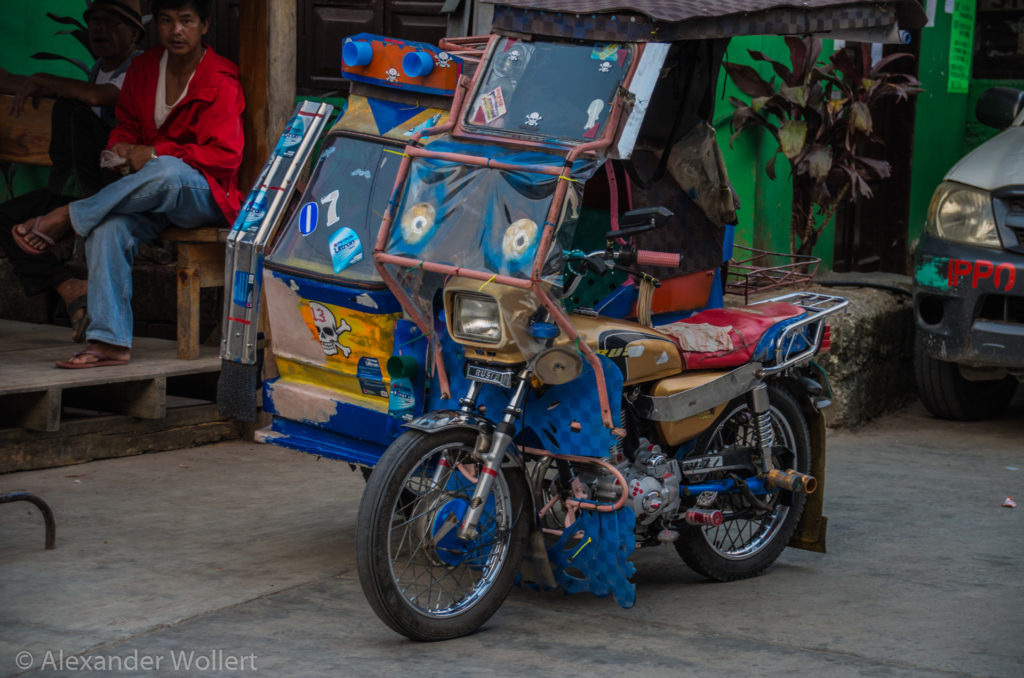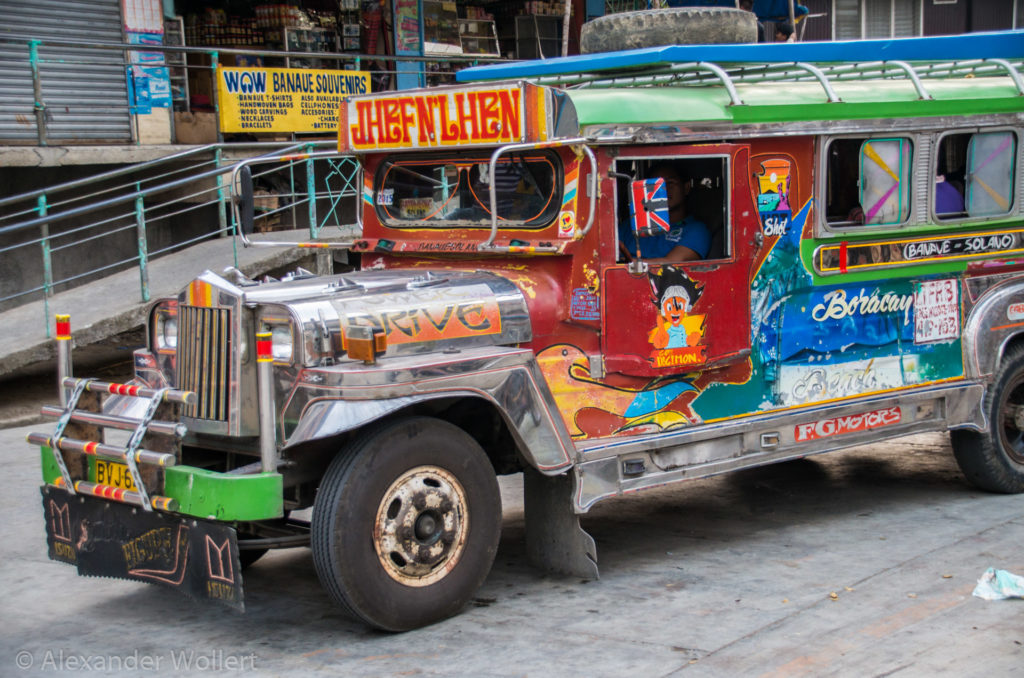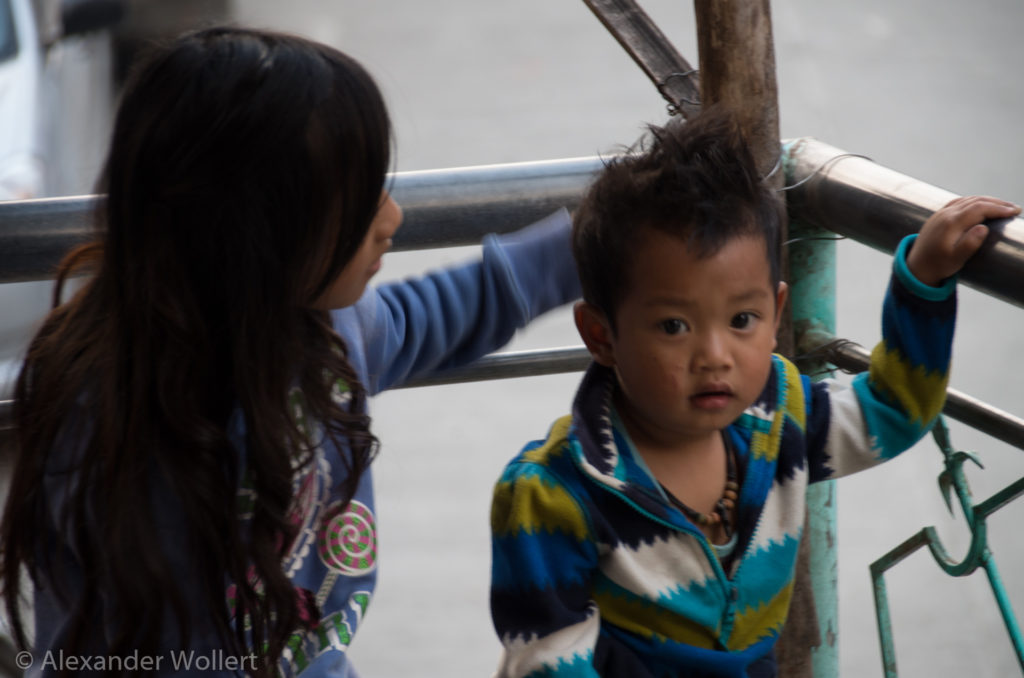Diary Entry
Gone were the days in clean and orderly Singapore and we continued in the dirty, loud juggernaut Manila. I am traveling with Janina through the Phillipines for the next weeks. Our travel route was everything, just not boring – what others might equate with “relaxing”. From the airport we immediatly took a taxi to take us through the night city to the bus station for our onward journey; jetlag is not for us, we leave that to others.
We get the first impression of the city. Traffic jams and traffic chaos take on a new dimension in their expression. It is full, the streets suffer from an infarction, you constantly rob yourself of the right of way, but that doesn’t bother anyone. Scooters cheat through gaps in the cars and on the roadside you can see people sitting in small stalls in front of their gray and dirty corrugated iron houses and selling chips or flip-flops, while people and dogs are handing out the contents of trash bags on the street.
Tricycles have a low capacity and are intended for short distances. You take a motorcycle and add a covered sidecar to it, which can only fit two people. Both types make a huge noise and would fail both with every German car safety inspection and every exhaust gas control with great fireworks.
Tagalog is spoken in the Philippines, most also speak English. Tagalog itself is a mixture of English, Spanish and native language. Since the island nation was dominated for a long time by Spain and later the USA, the composition of the language is self-explanatory.
The currency is peso as a relic of the Spaniards. The exchange rate is quite inflationary, 50 pesos currently correspond to one euro.

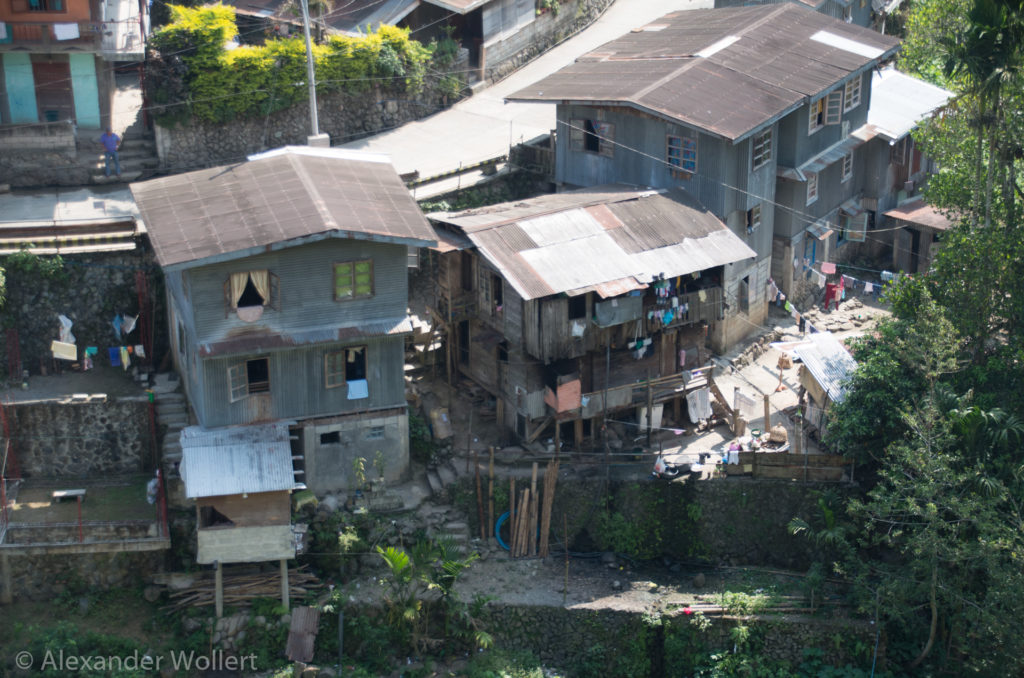



The “waiting area” of the buses was for the most part outdoors and in a great hustle and bustle, making you feel like you were at the local space station of a pirate planet. A sign specifically indicated that from June onwards, it is forbidden to take chickens, dogs, dried fish or motorcycles with you. We were lucky because the bus was sold out and we were given seats for emergency seats in the middle row. The bus did not fill up as expected and we were able to keep our conquered seats by the window.
The journey should last through the night and 12 hours to bring us to Banaue, the heart of the mountain rice terraces in the north of the main island of Luzon.
Another picture awaited us in the morning. The sun rises around 6 a.m. and with the first light something is going on on all streets. Until we arrived in Banaue, we followed the mountainous landscape spellbound through the villages to Banaue.
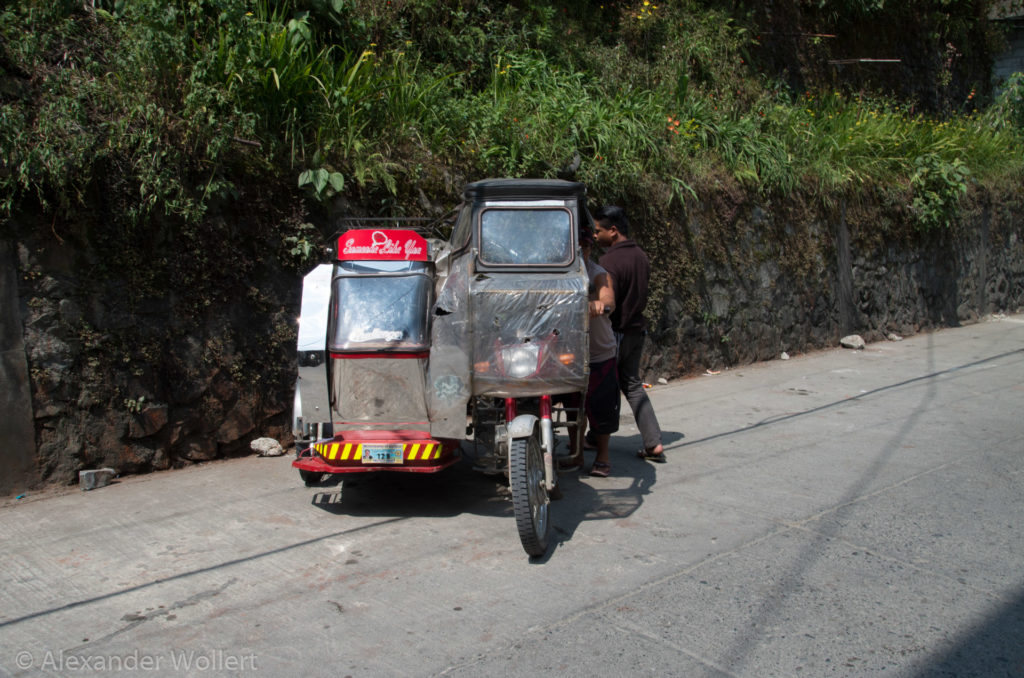
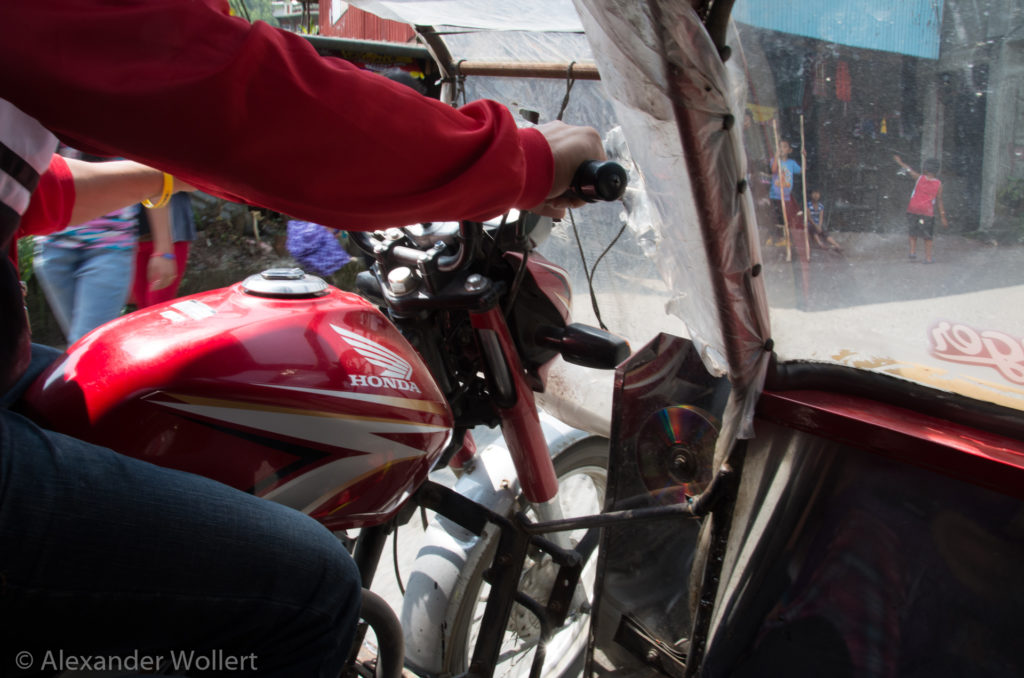
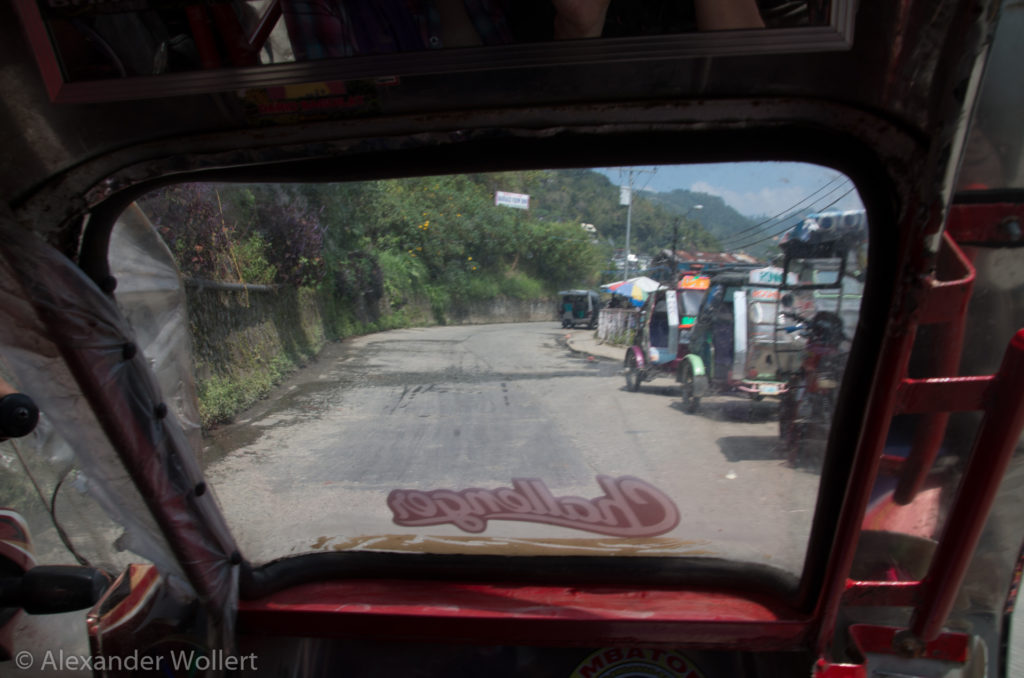

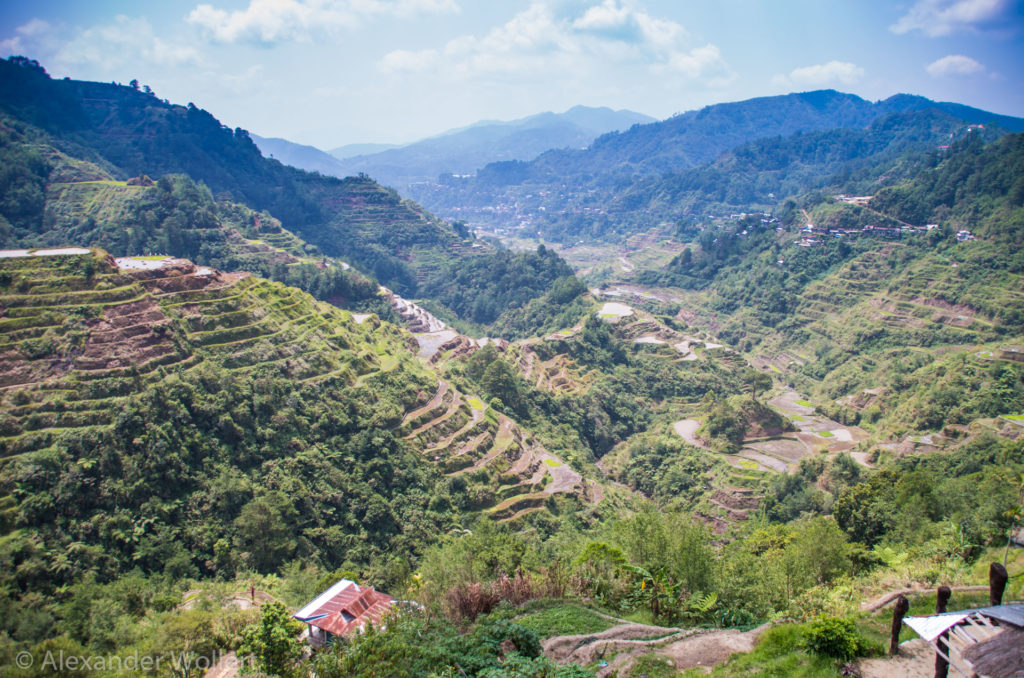


I had booked accommodation on the Internet. As a surprise, we found that this was not at all in the village center, but 20 km away and can only be reached on foot. But we were quickly convinced of the great experience of the trip. It was a stroke of luck, because we had wished for a hike through the rice terraces.
Strengthened briefly by breakfast, we packed the most necessary things for on the go and an overnight stay in a daypack, while our guide “Jojo” was already present for the next two days. This was also necessary because the rice fields were a true labyrinth and the road signs innovation in general has never been heard of in the Philippines.



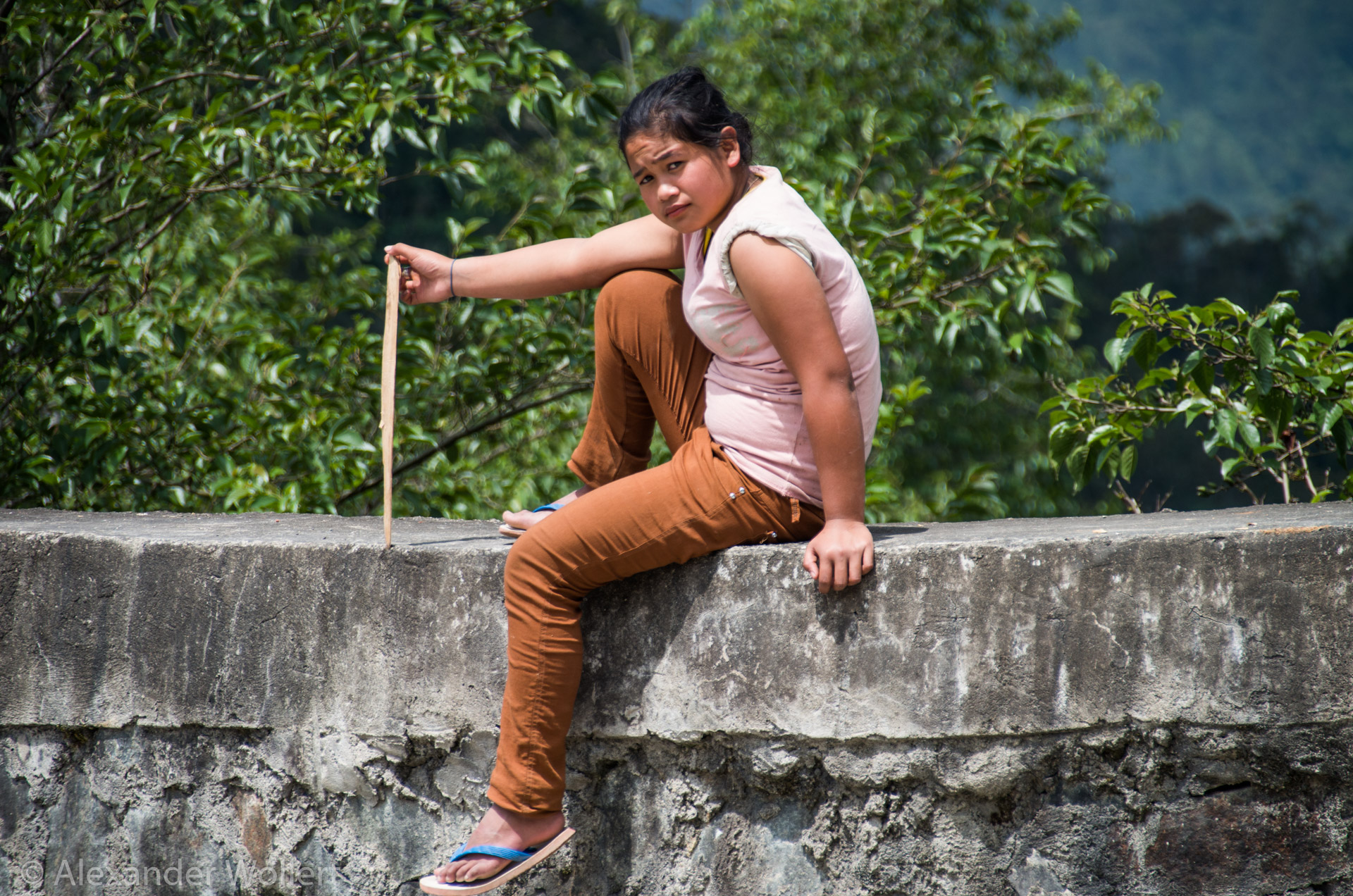

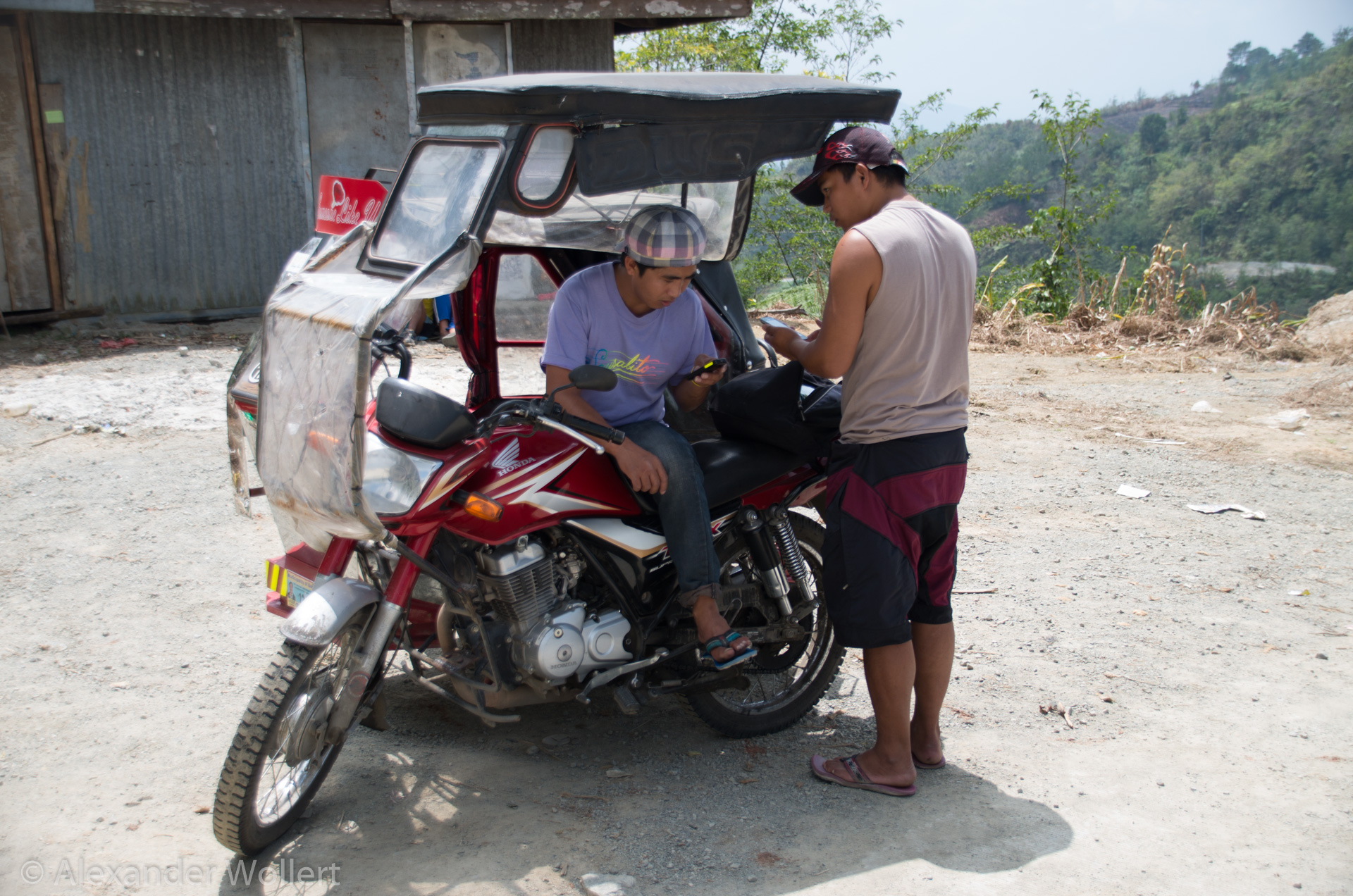

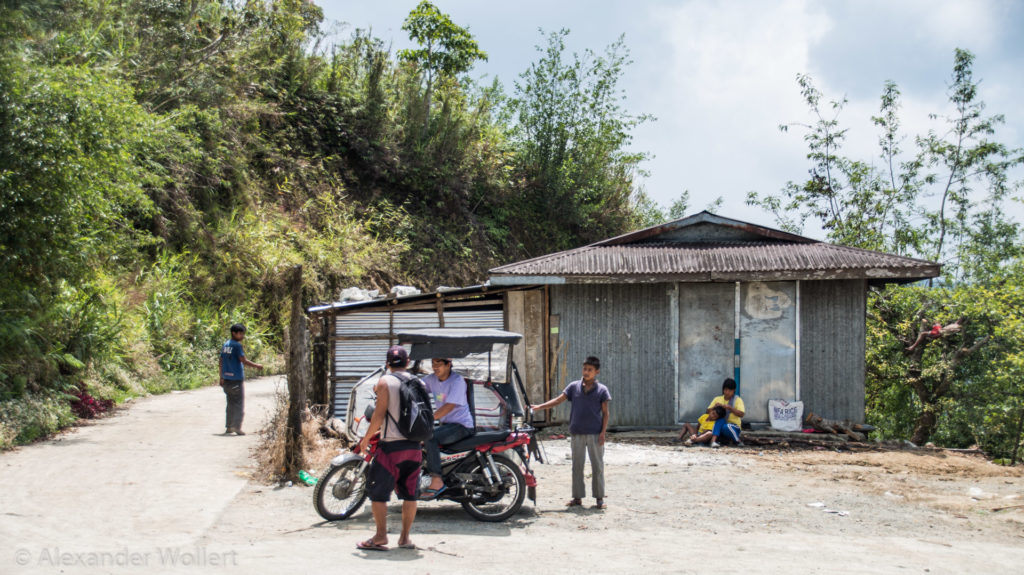


First we went up the mountain with a trycicle to walk a path through the jungle for several hours. Fortunately, the temperatures in the mountains are not as high as in the lowlands and, remarkably, there are no mosquitoes here.
But a natural rainforest, in which there were also many wild orchids to see.


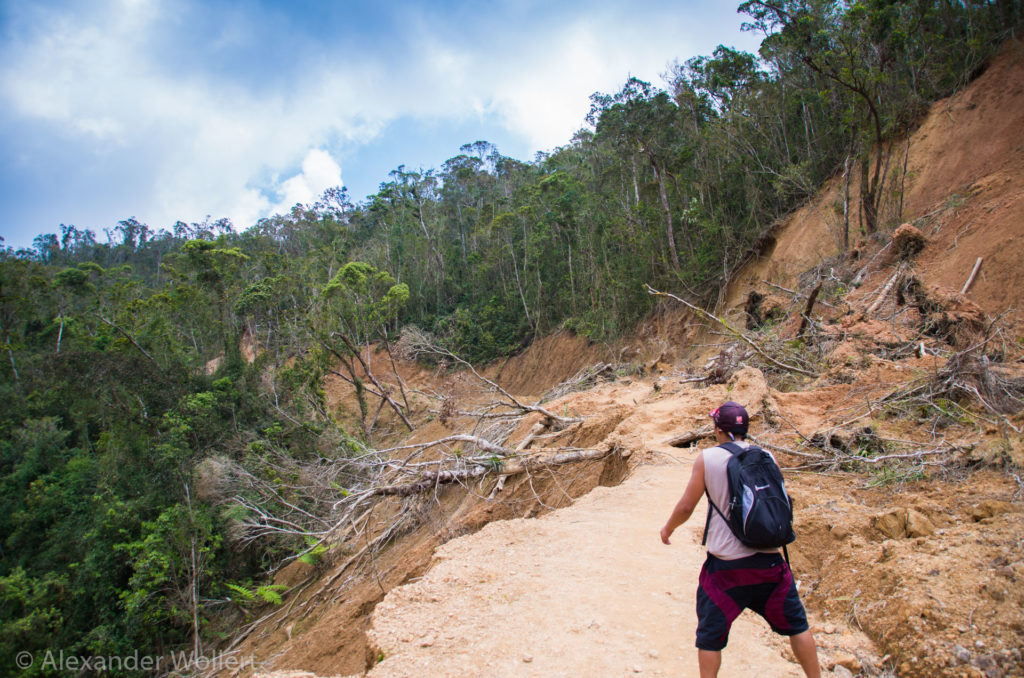





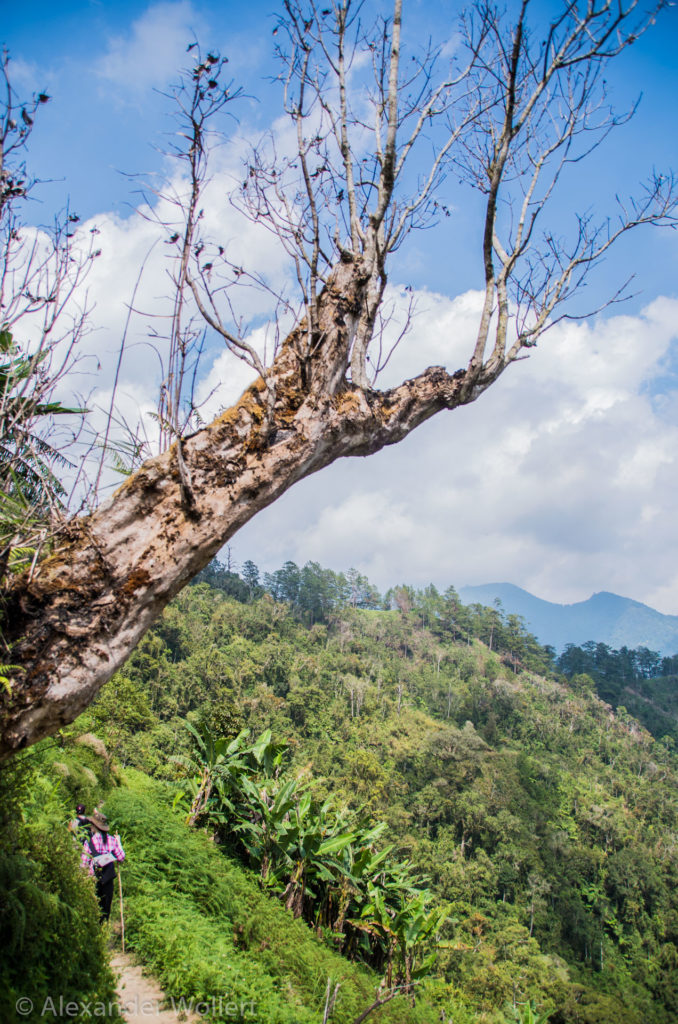
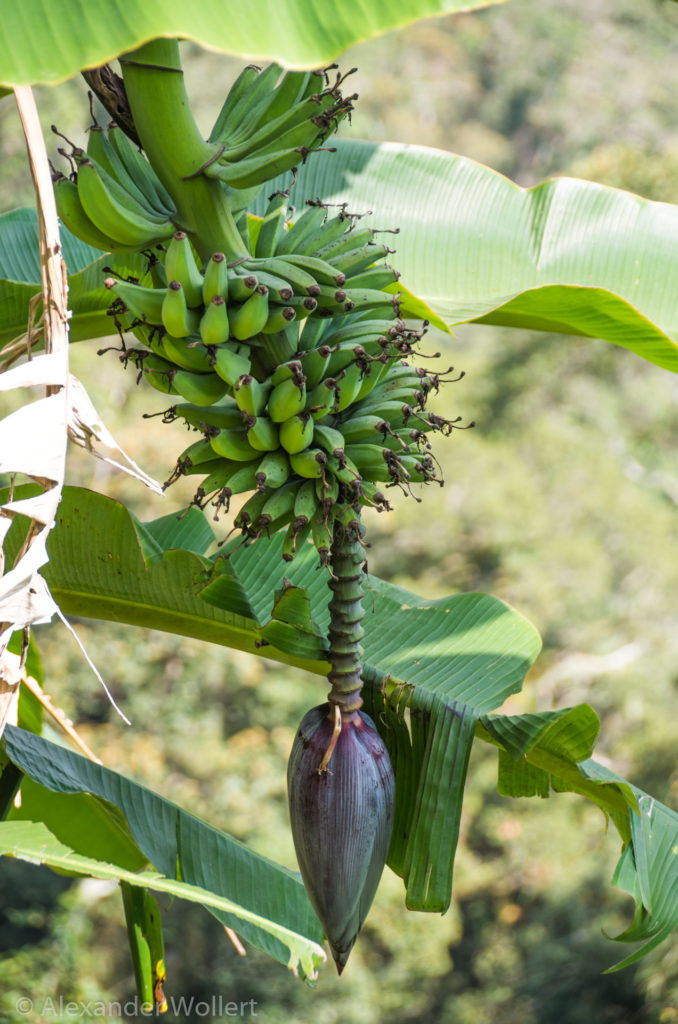




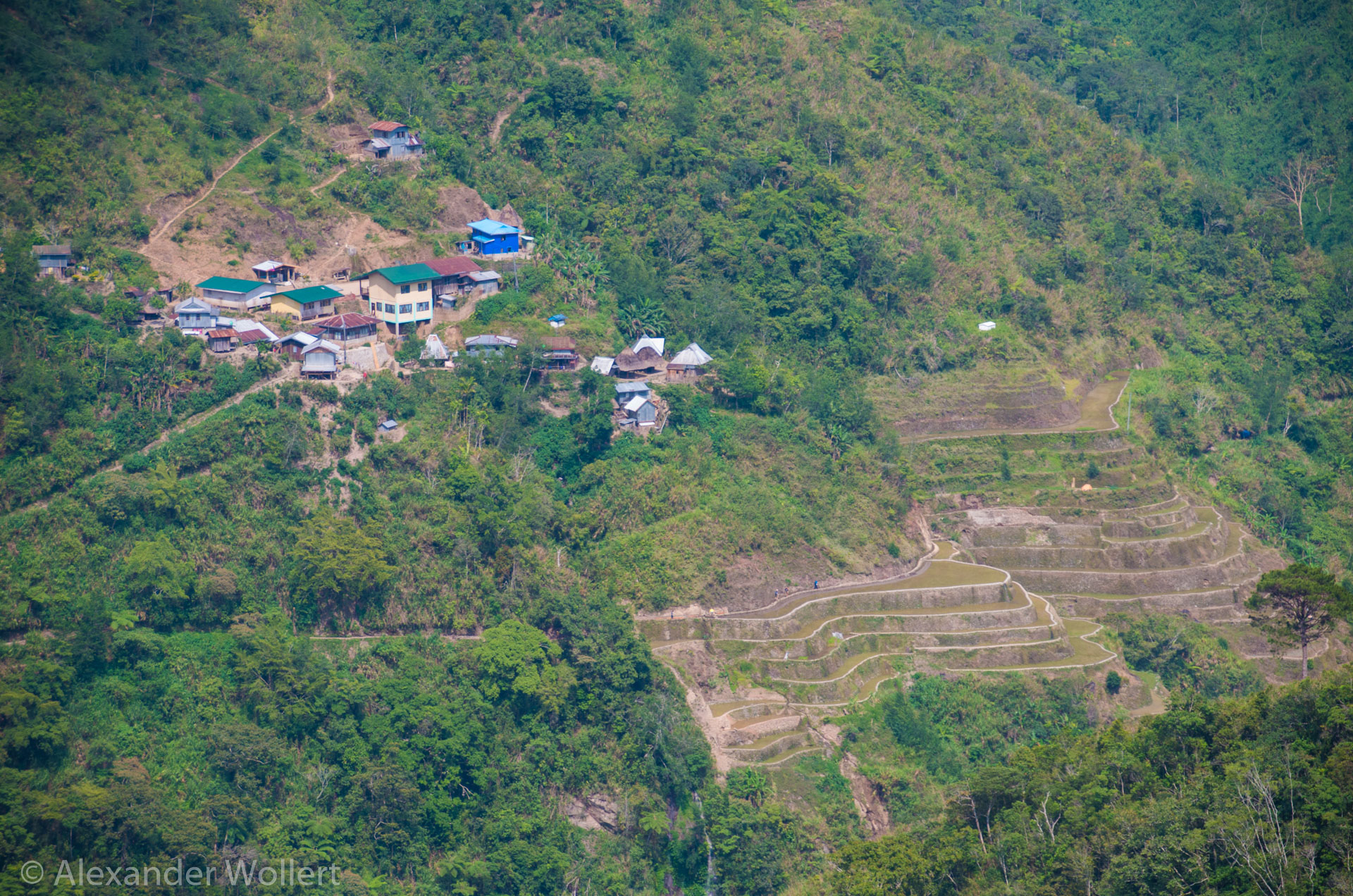

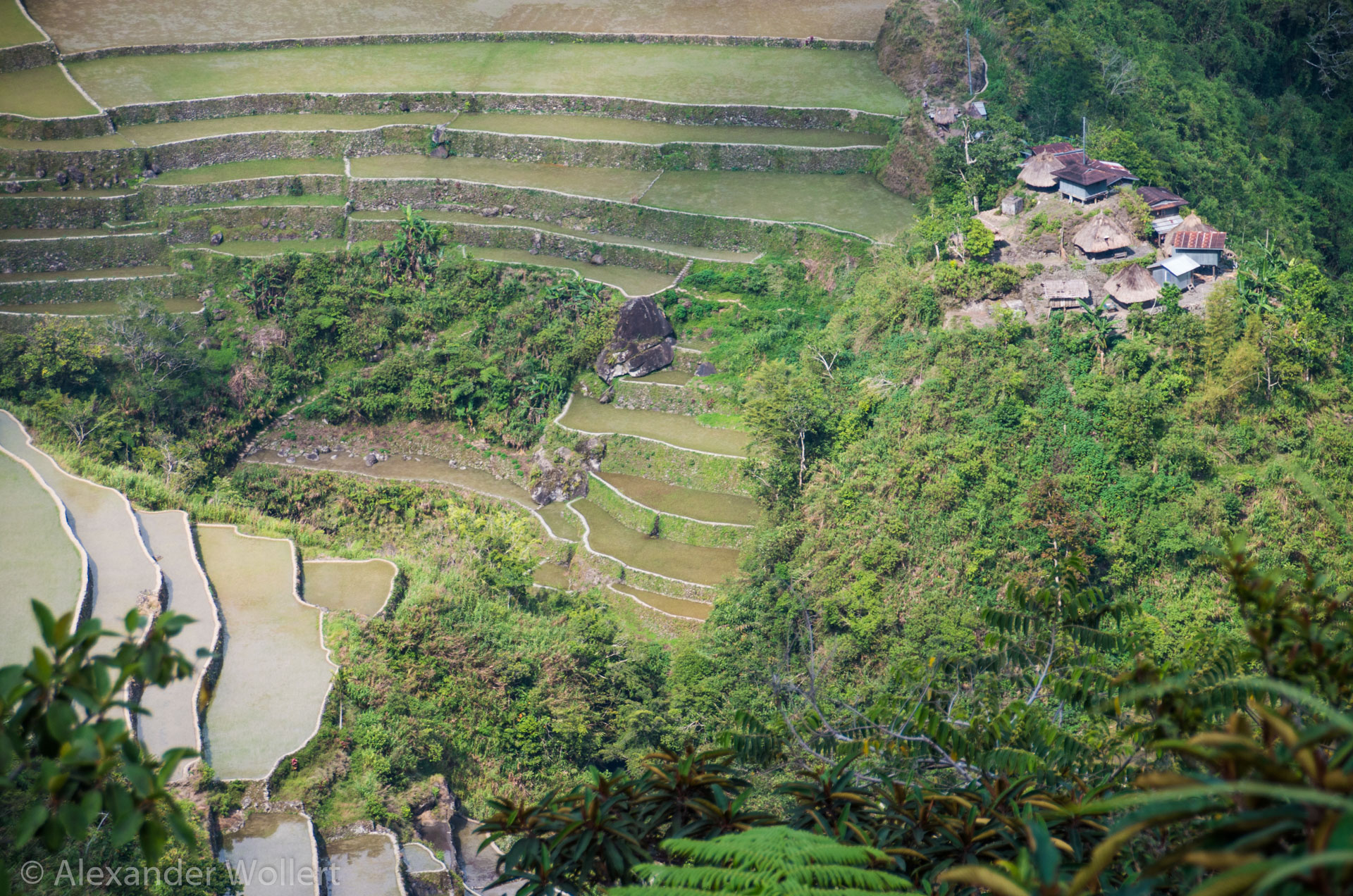
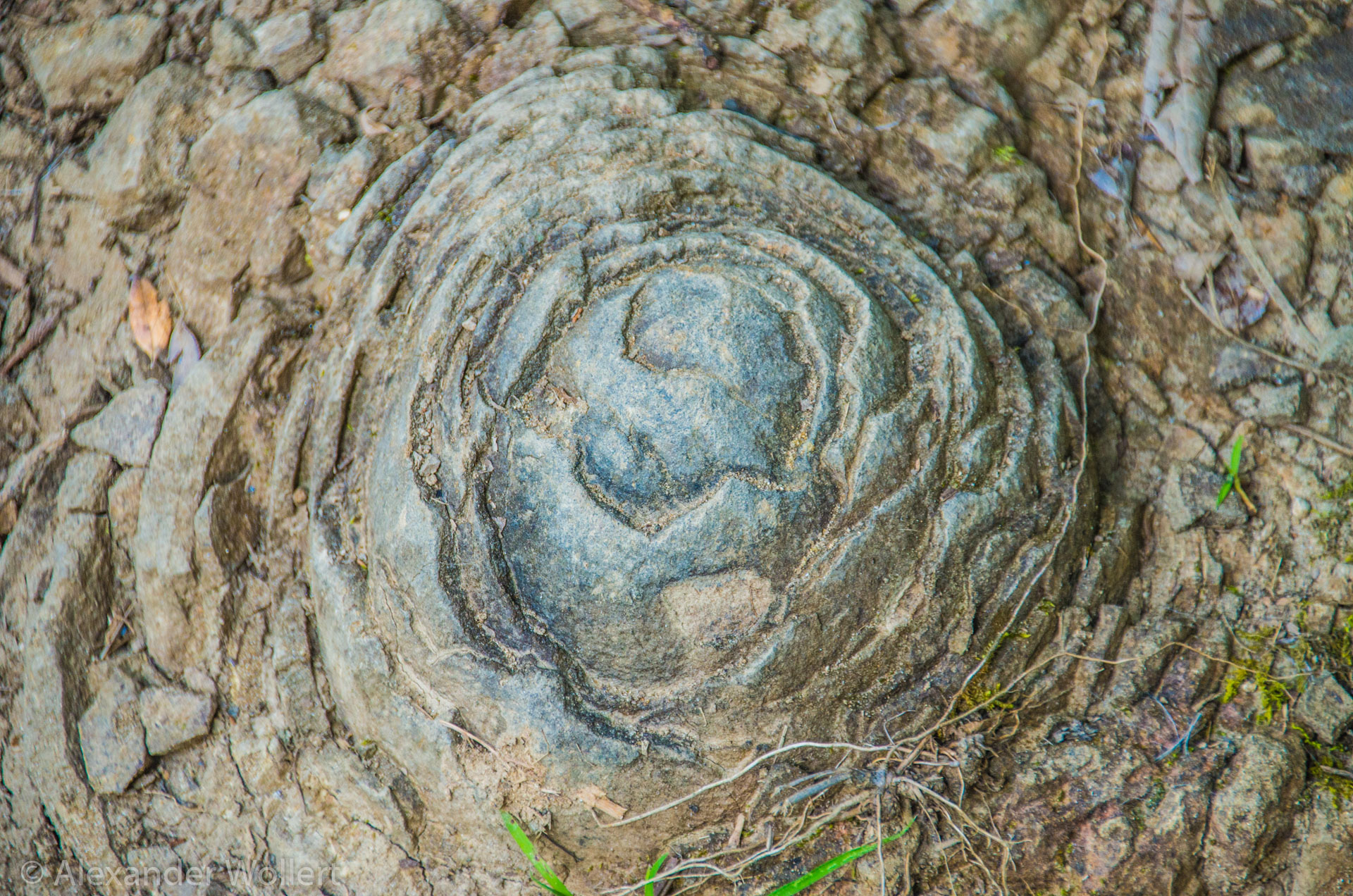
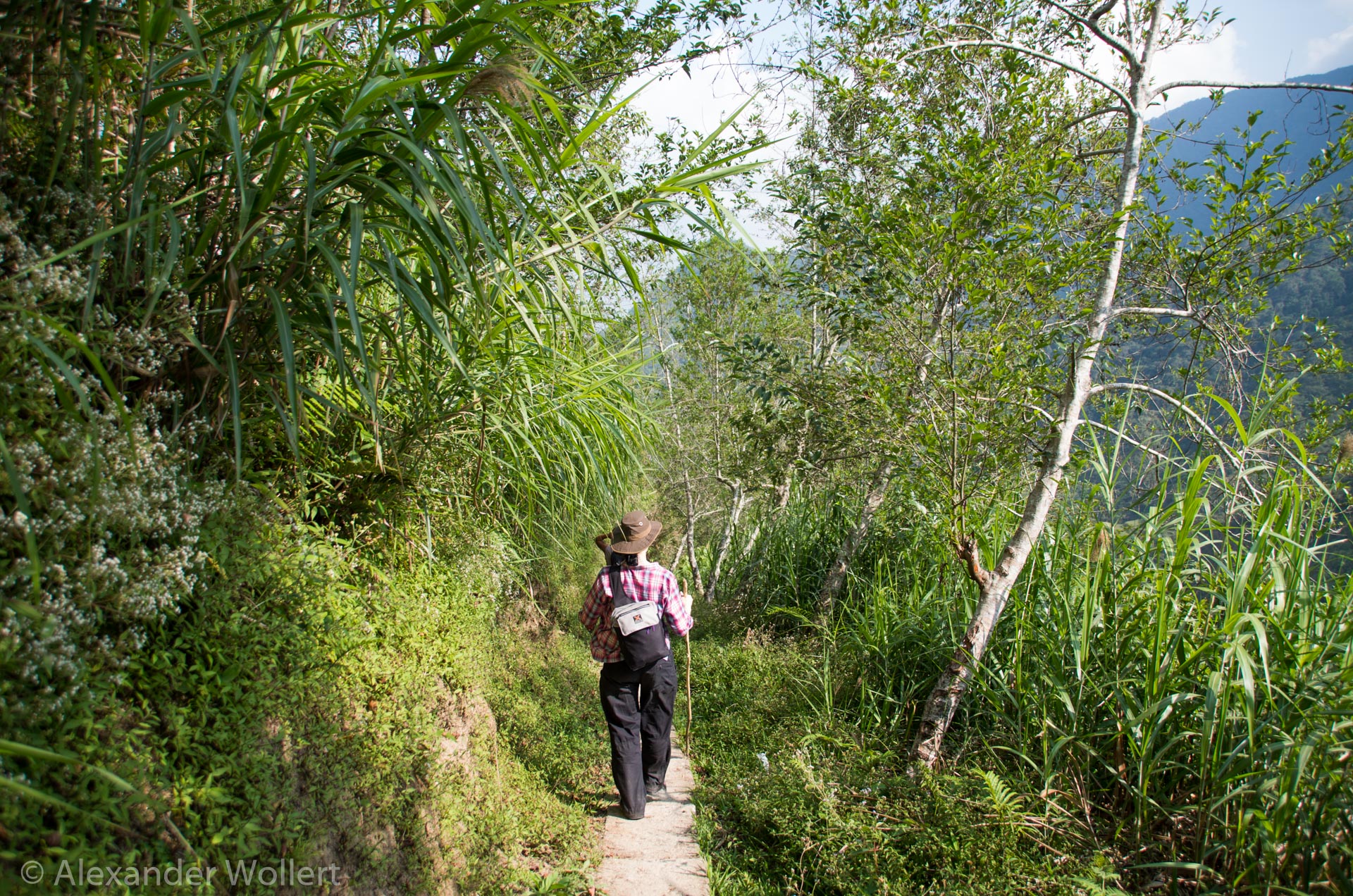
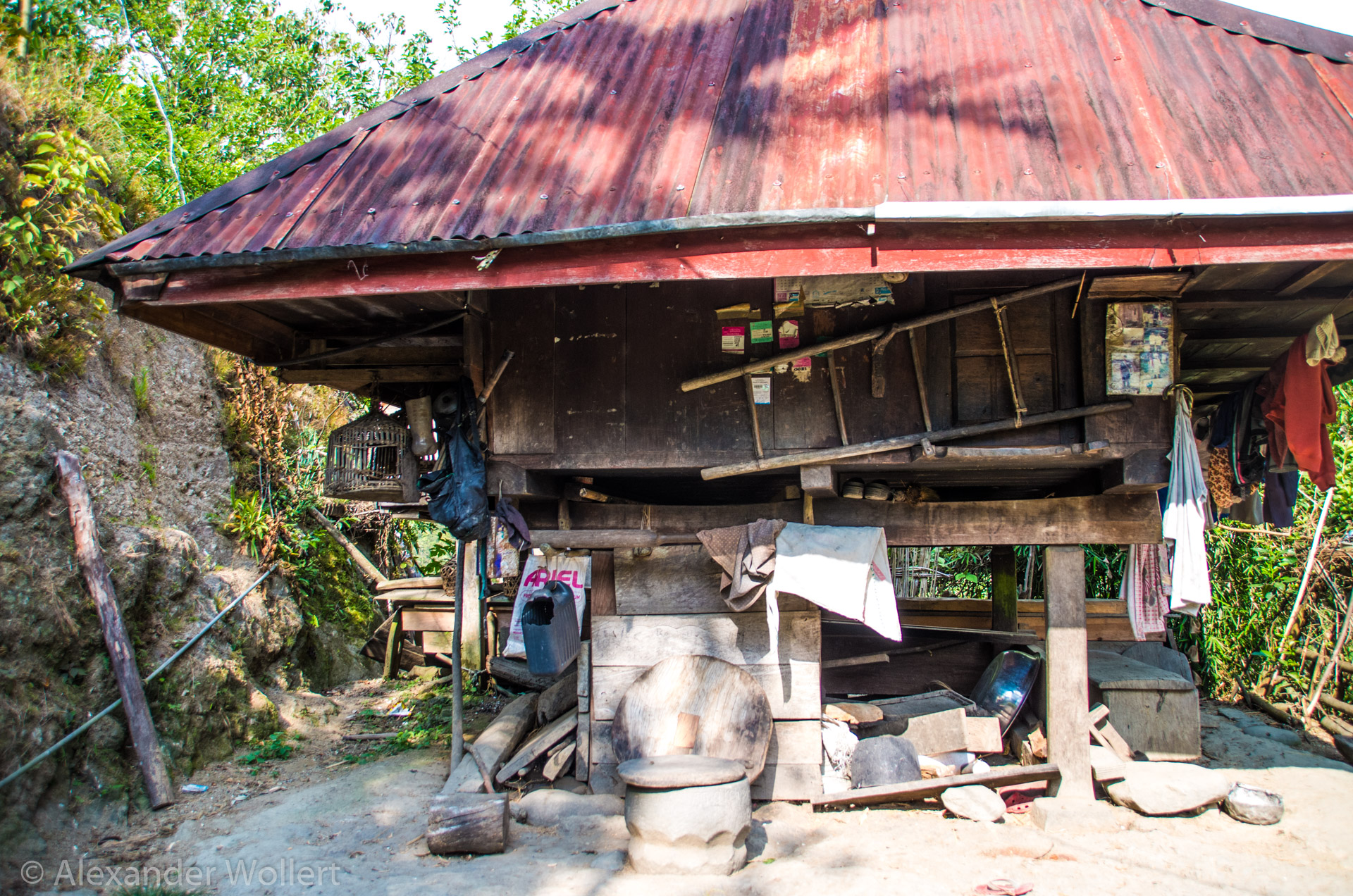
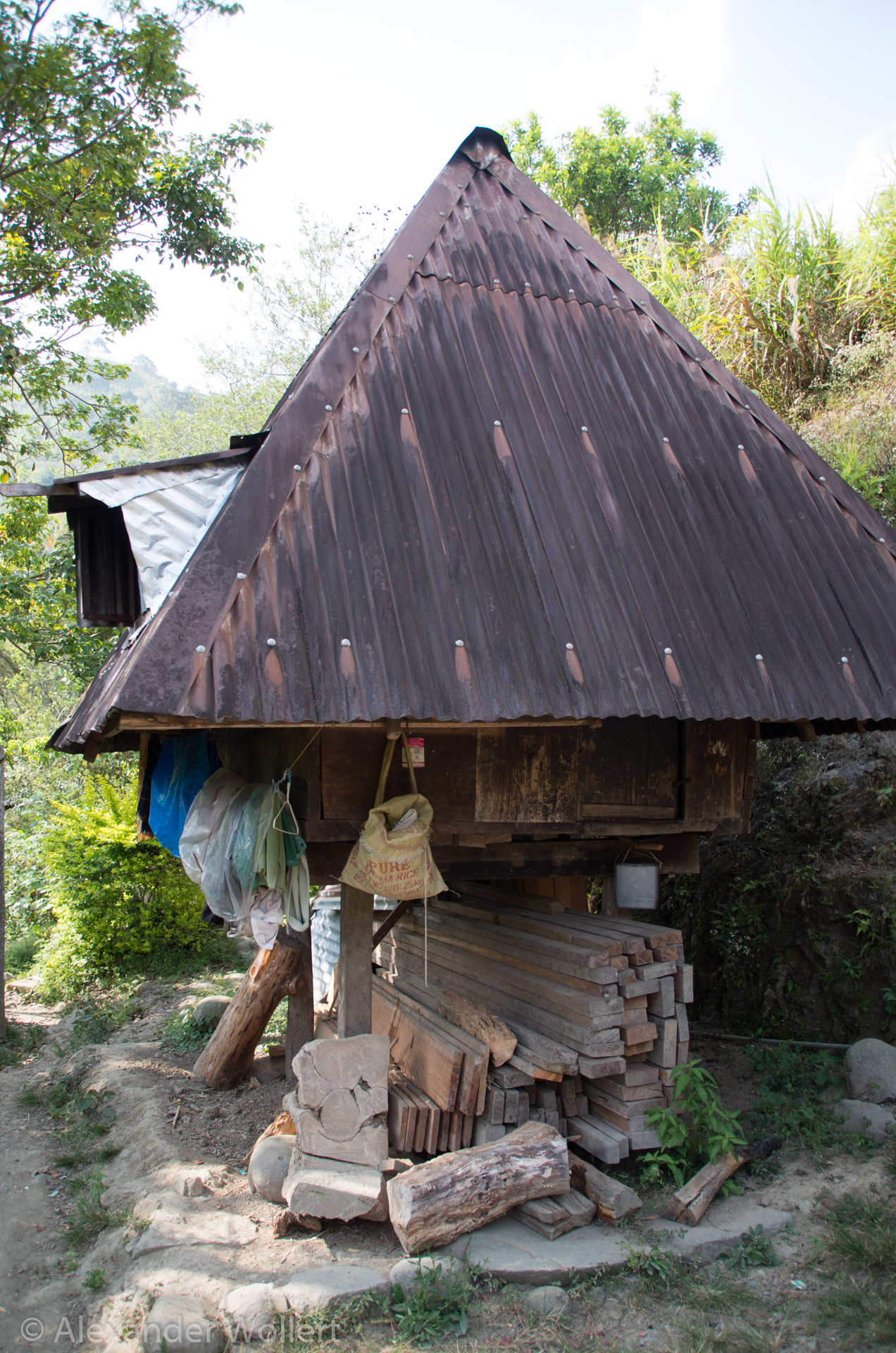
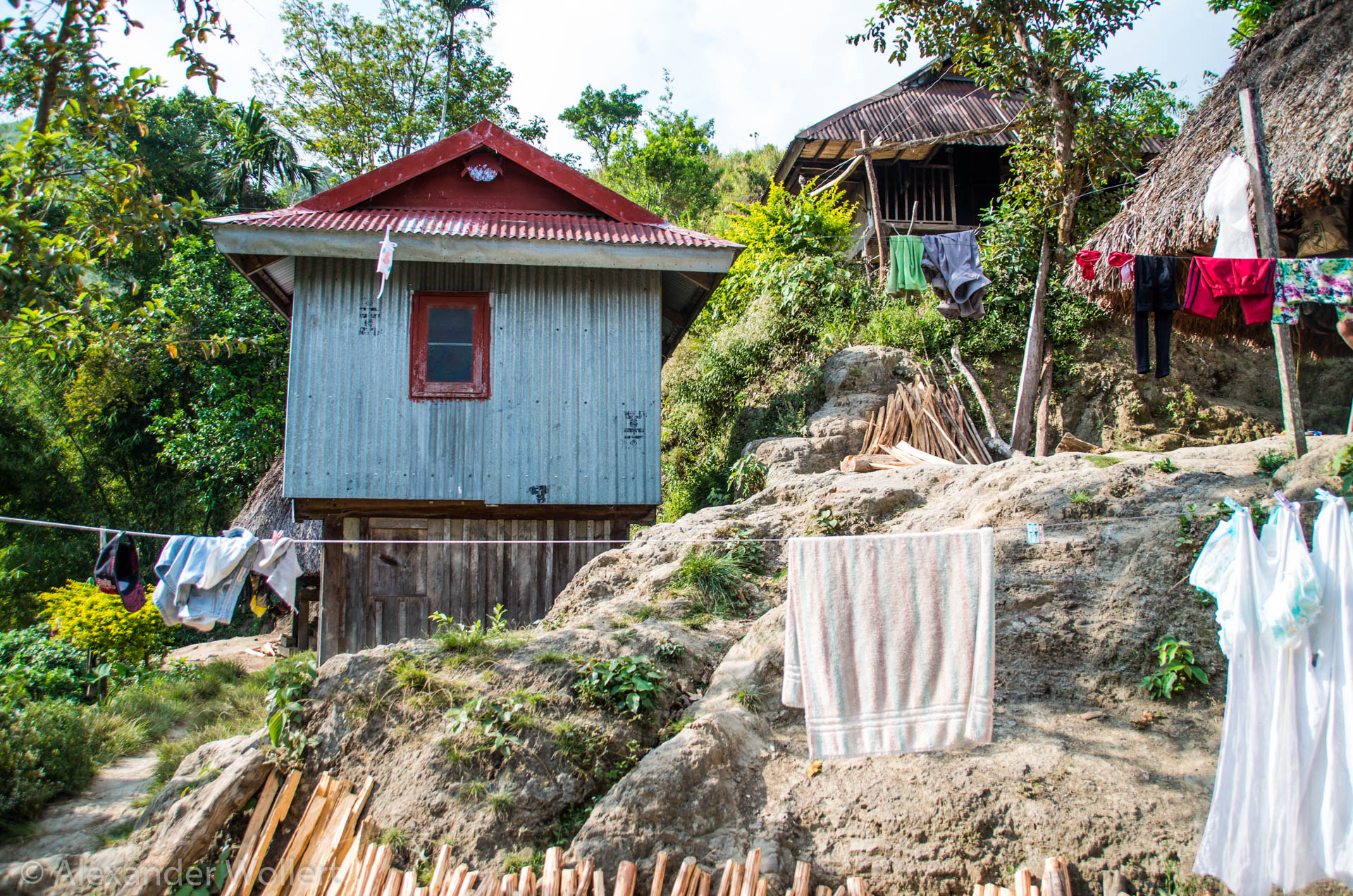
Jojo was a nice guy, told us a lot about the local fauna and flora and the culture of the people.
He comes from here, his parents grow rice himself and the people in the villages are familiar to him.

Through the thicket you could already see rice terraces on individual slopes. We came through remote villages to which no road leads.
The inhabitants still live in their wooden stilt houses and the children in particular are thrilled to see strange birds like us.

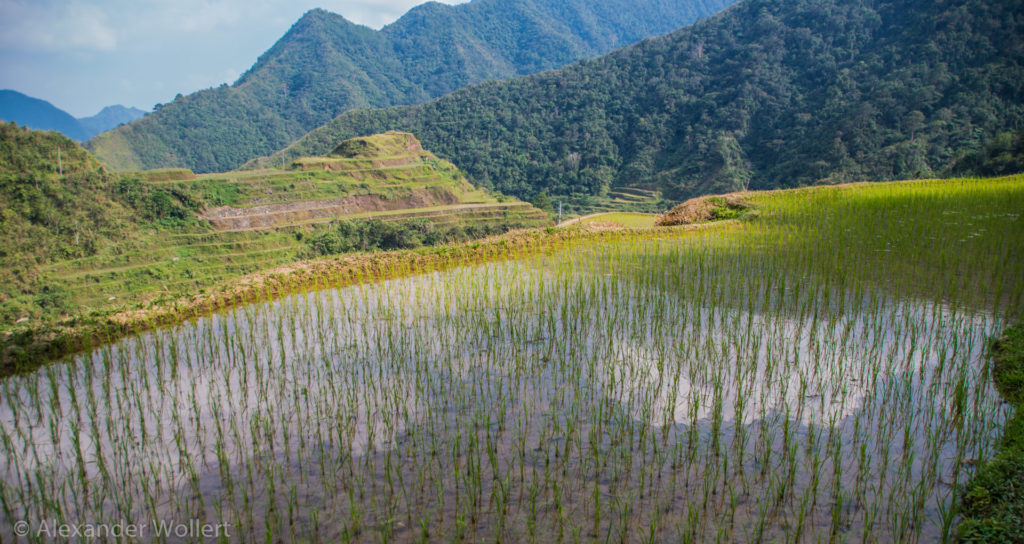




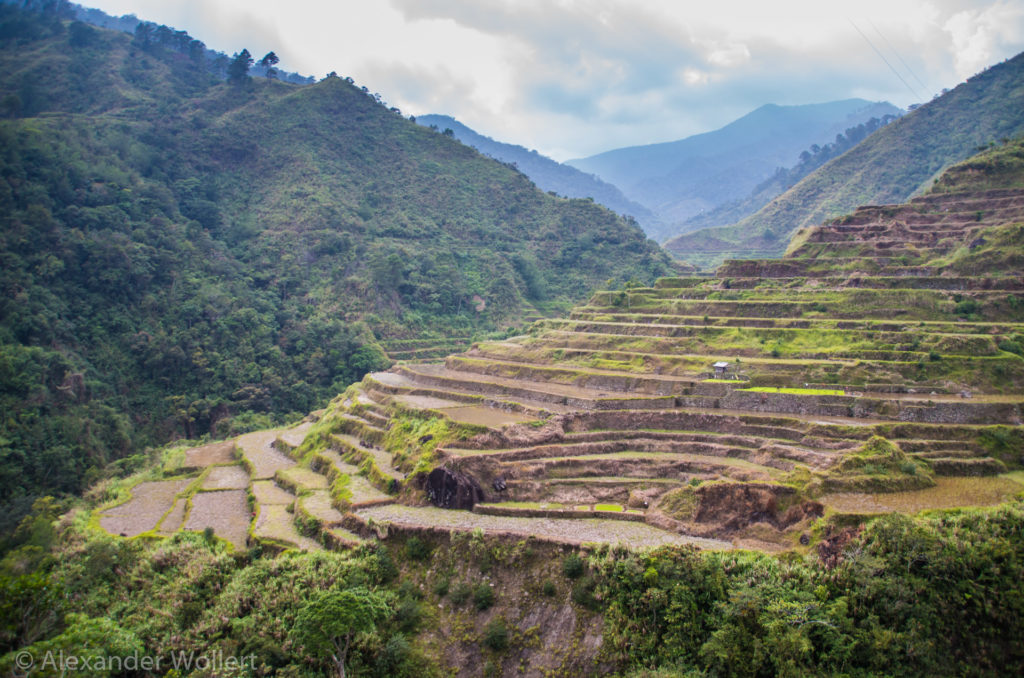


After all, we are already climbing on the expected terraces, past the village of Puta, over the narrow stone walls, because there are no other paths here.
People tend the fields and dig some with the help of their carabaos – the tame water buffalo used by everyone.
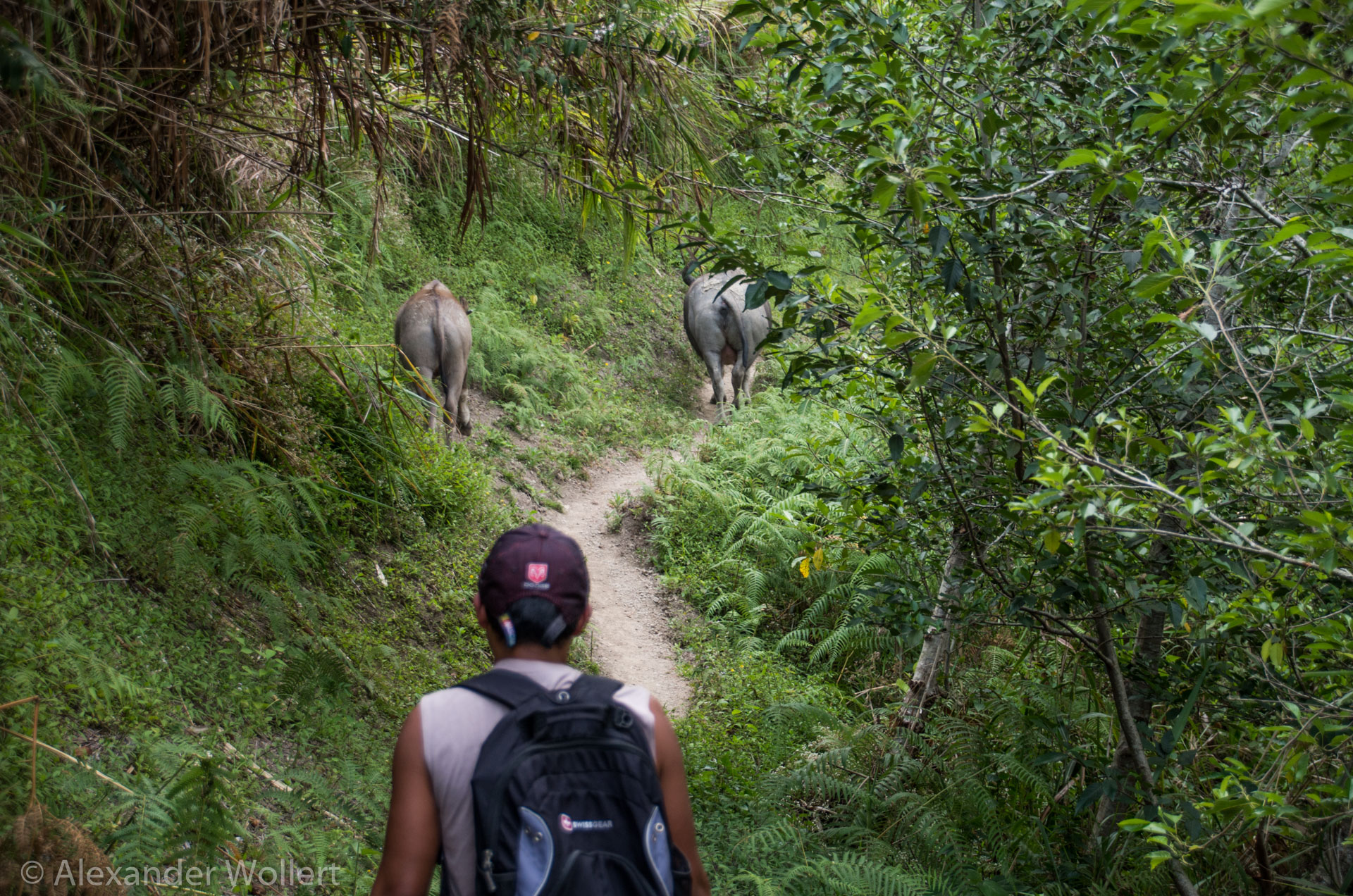
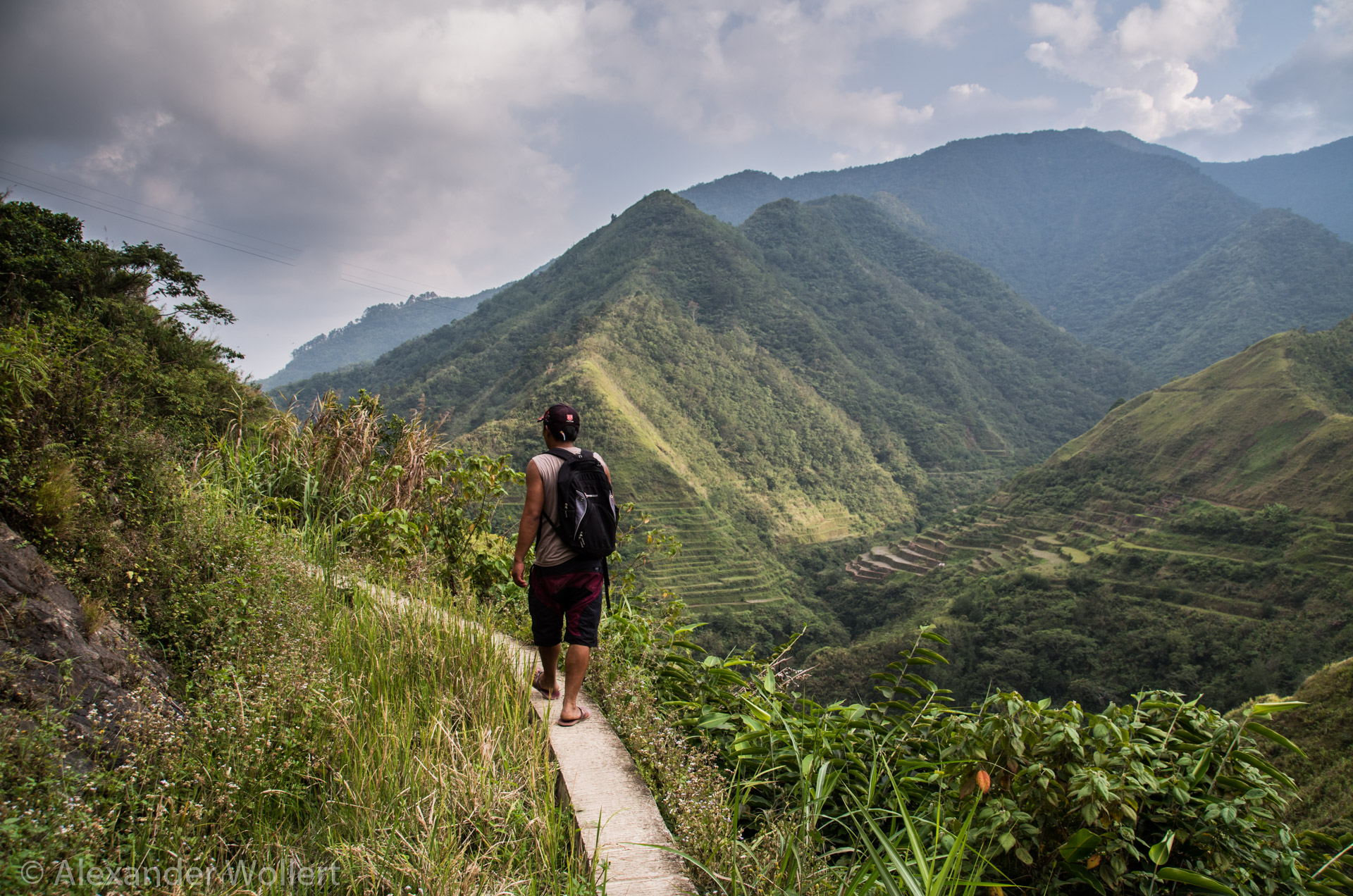
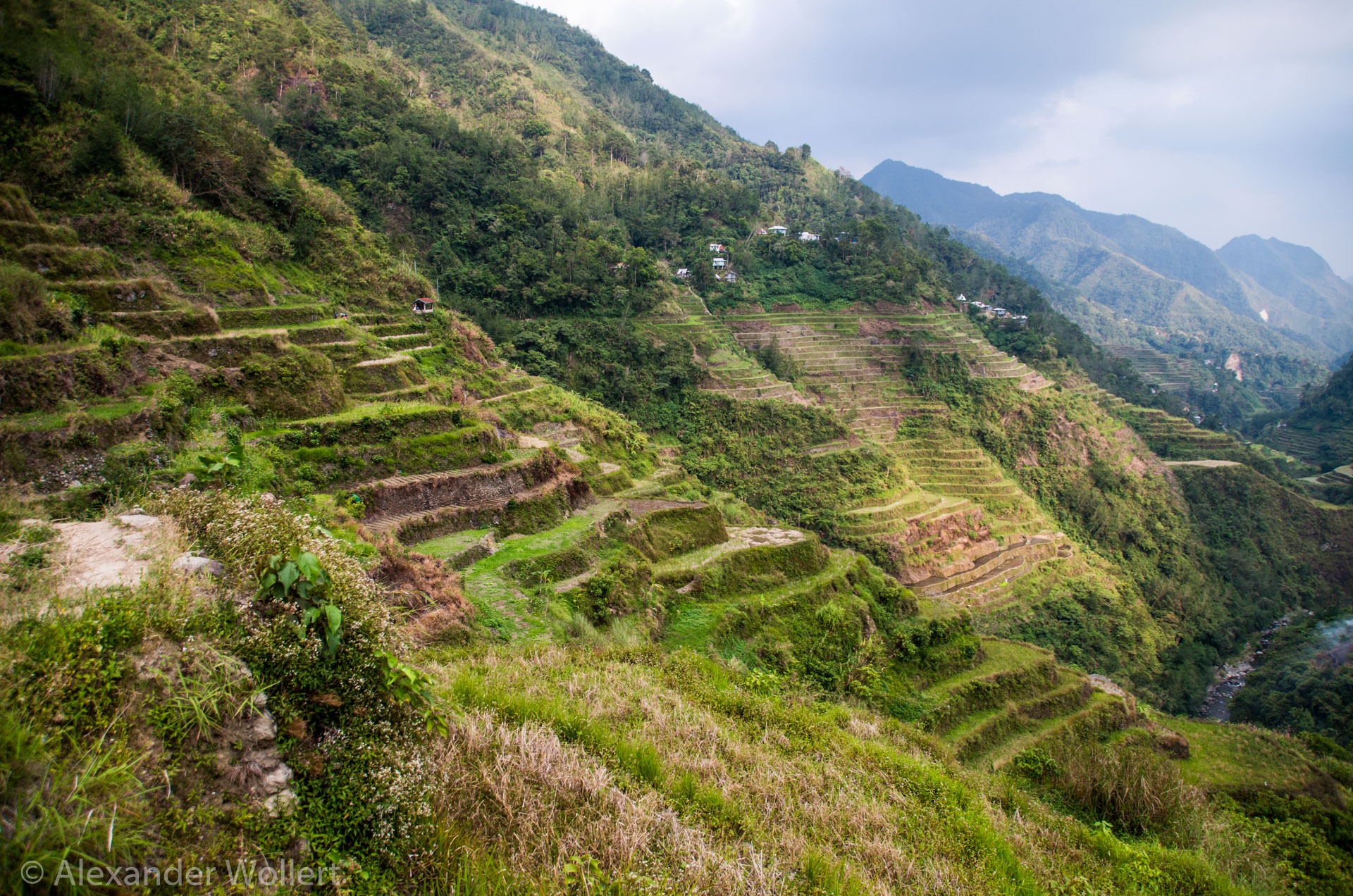

The path is long and only shortly after sunset we arrive in Cambulo and our accommodation. Again, there is no street and no marking on a Google map. For this we have an indescribable view from the terrace of the cozy little wooden house on a valley full of rice terraces and in the middle of a hill on which a small village enthroned in the form of several toy houses stacked on top of each other. As soon as the sun went down, a lot of fireflies provided light.
The wooden house – like most of the later accommodations – is sparsely but nicely furnished. You just shouldn’t have a problem with the fact that there are no toilet seats and the flushing is done manually through a bucket and bucket of water.

Next morning at sunrise we continued. We left Cambulo through further rice terraces and reached the village of Batad with its equally famous terraces at noon through the jungle and a descent with a sensational view. There was a waterfall nearby, to which we could descend and relax after the arduous climbing.
On the way we made friends with the two French girls Lucile and Marie, who “recovered” from working in a hospital in Manila.
The villagers in the area had already got used to the fact that tourists came by more often and built small shelters along the way, where you could buy water or coconuts. Fresh coconut juice is said to work well against dehydration. It may be, in any case it tastes delicious!
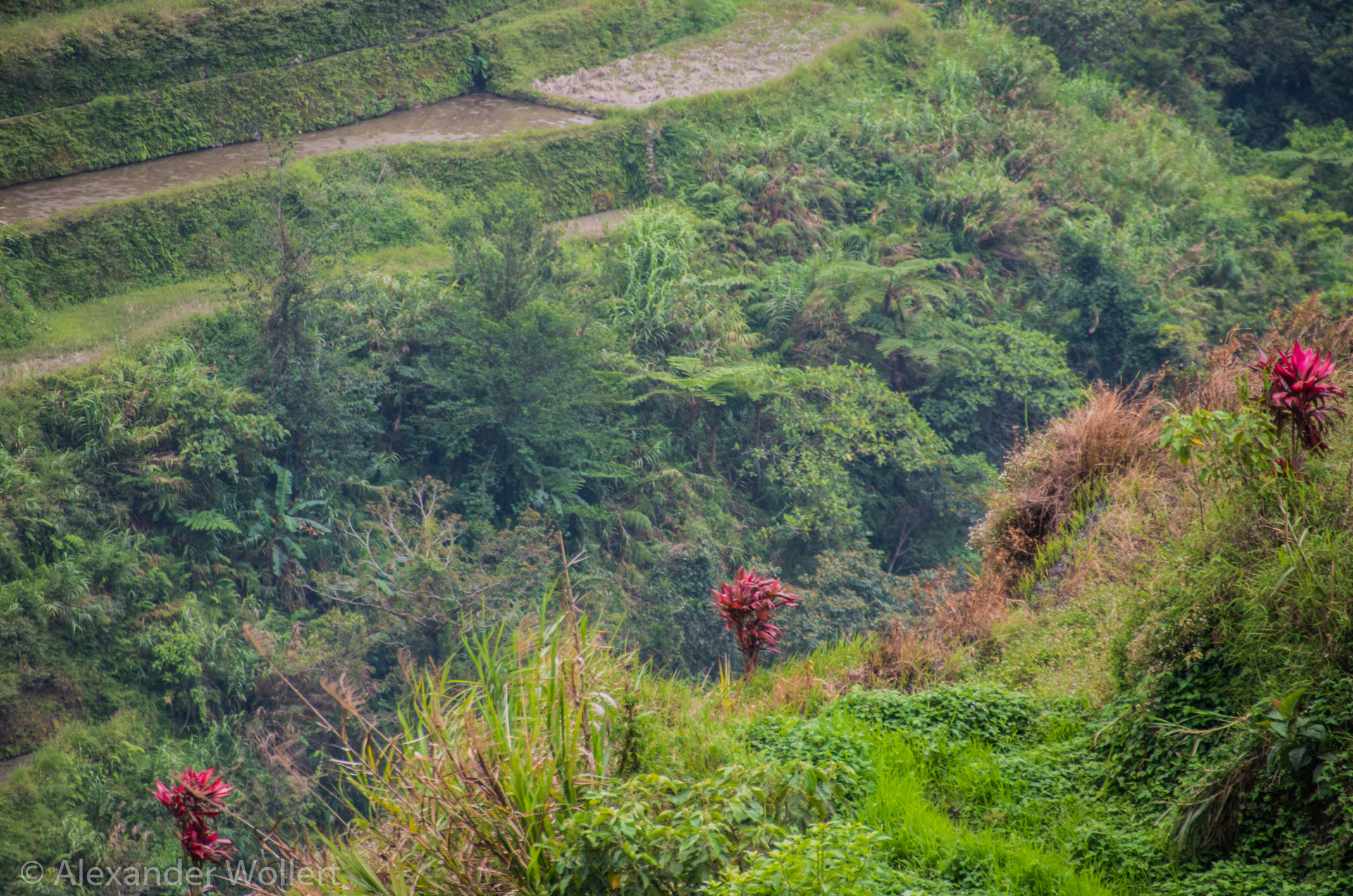


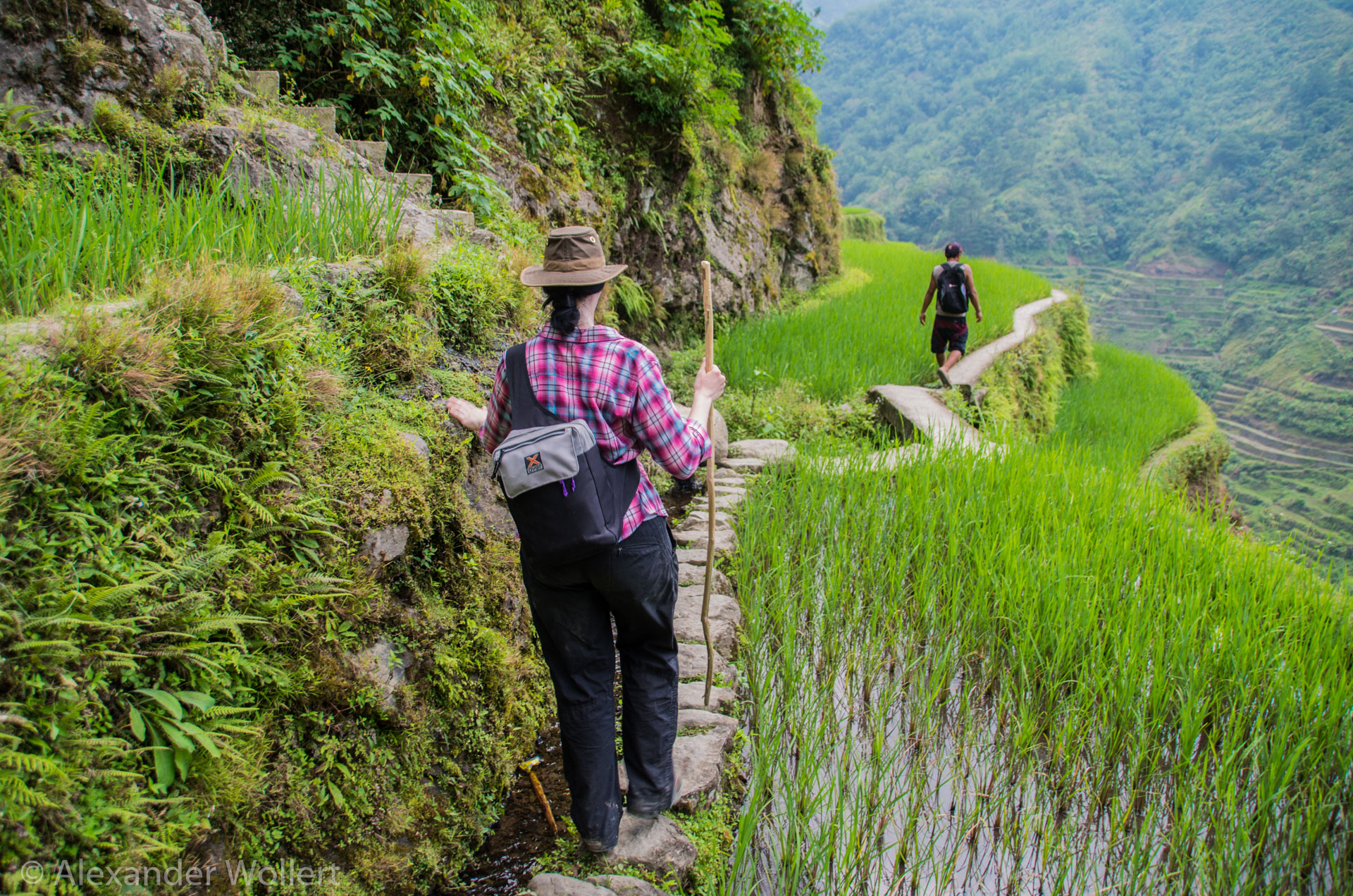

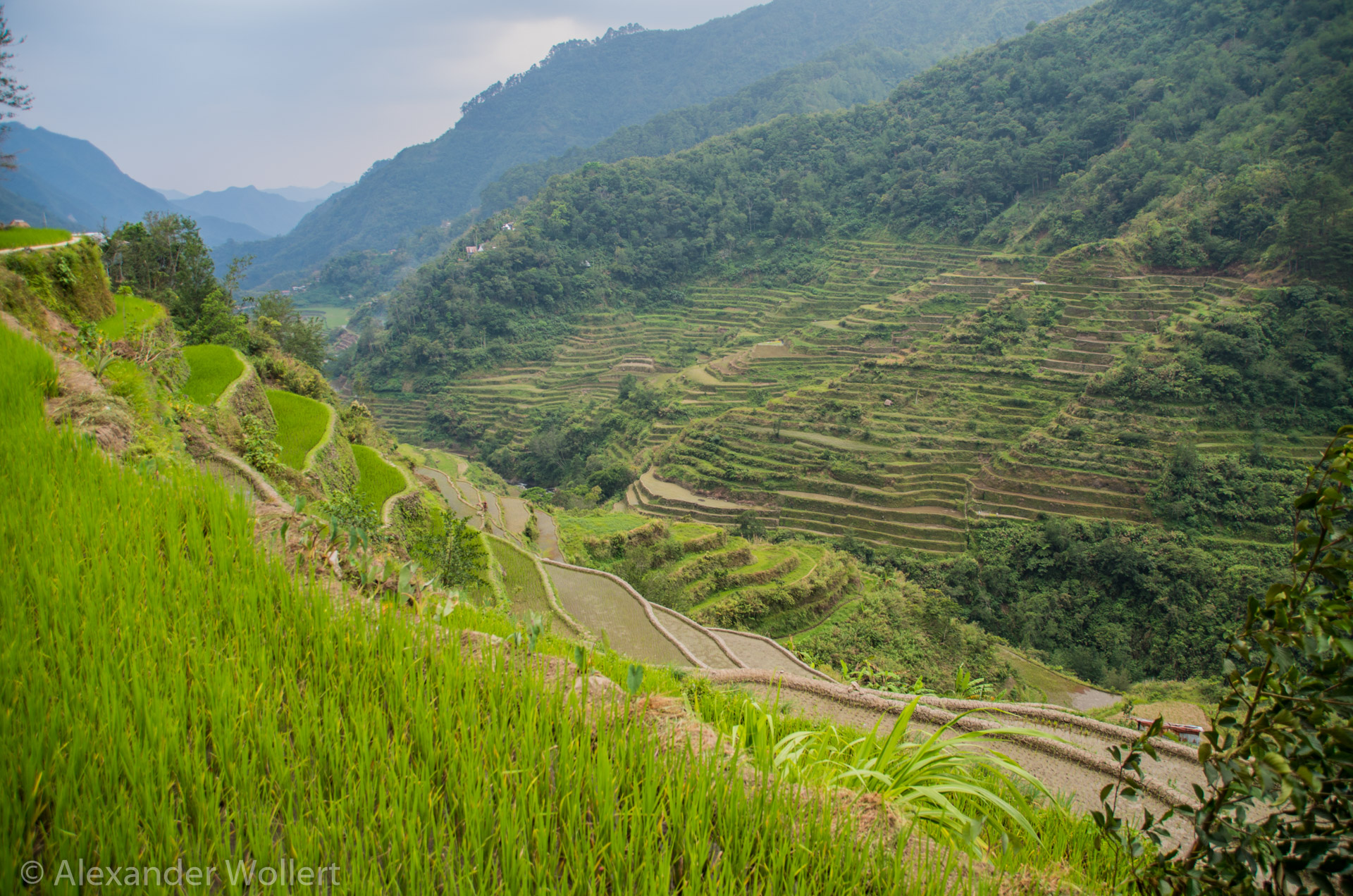




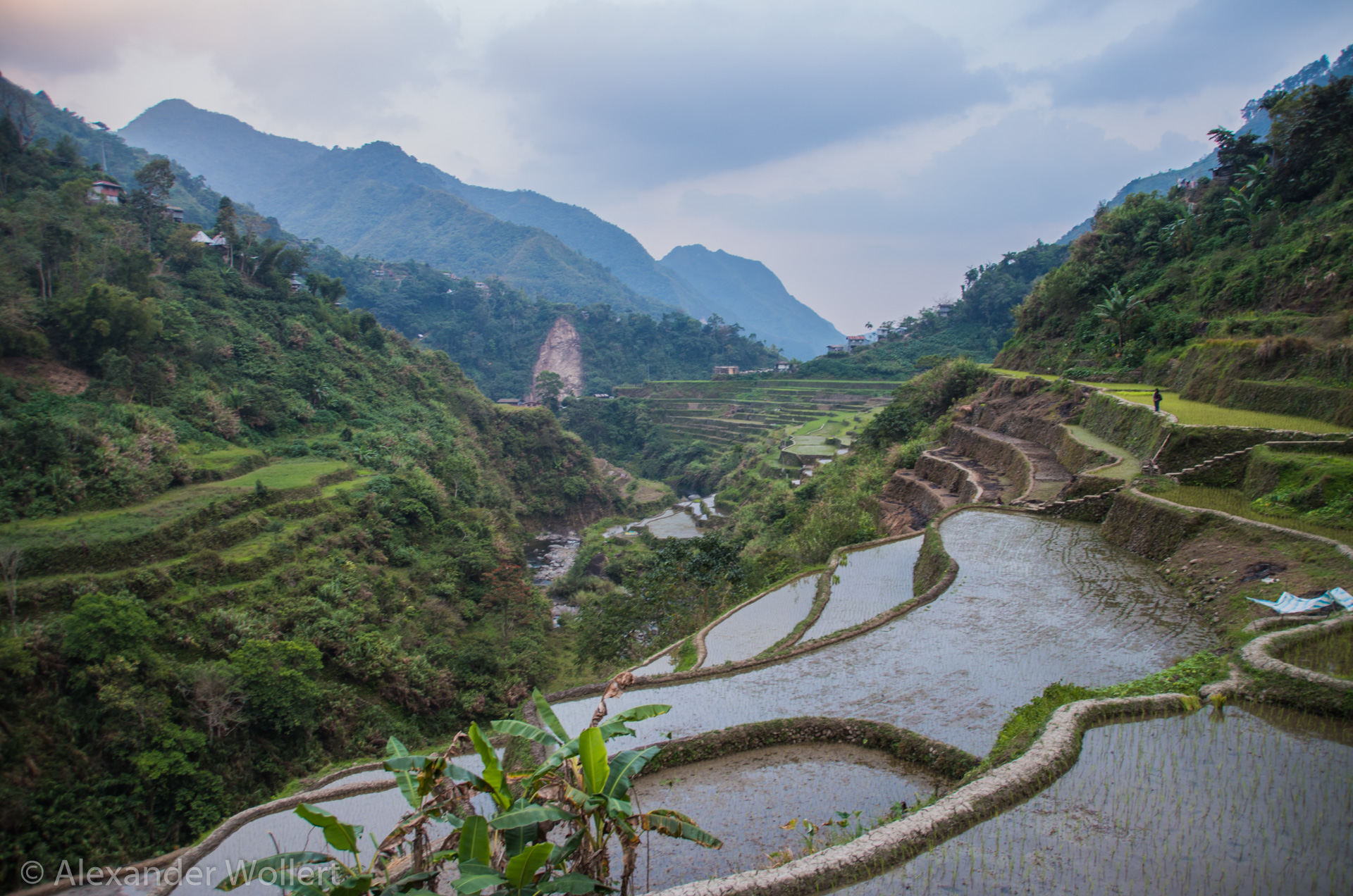

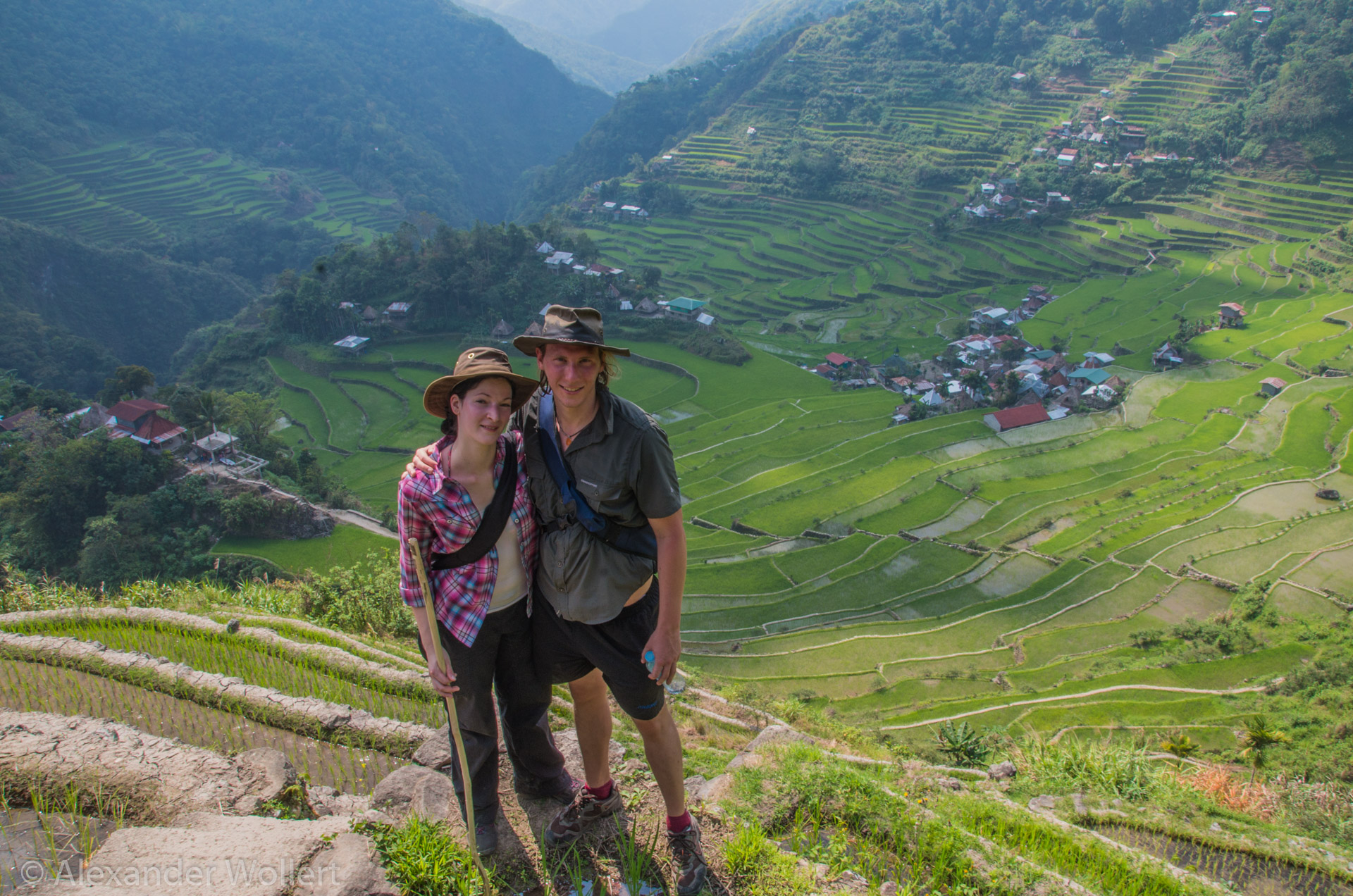
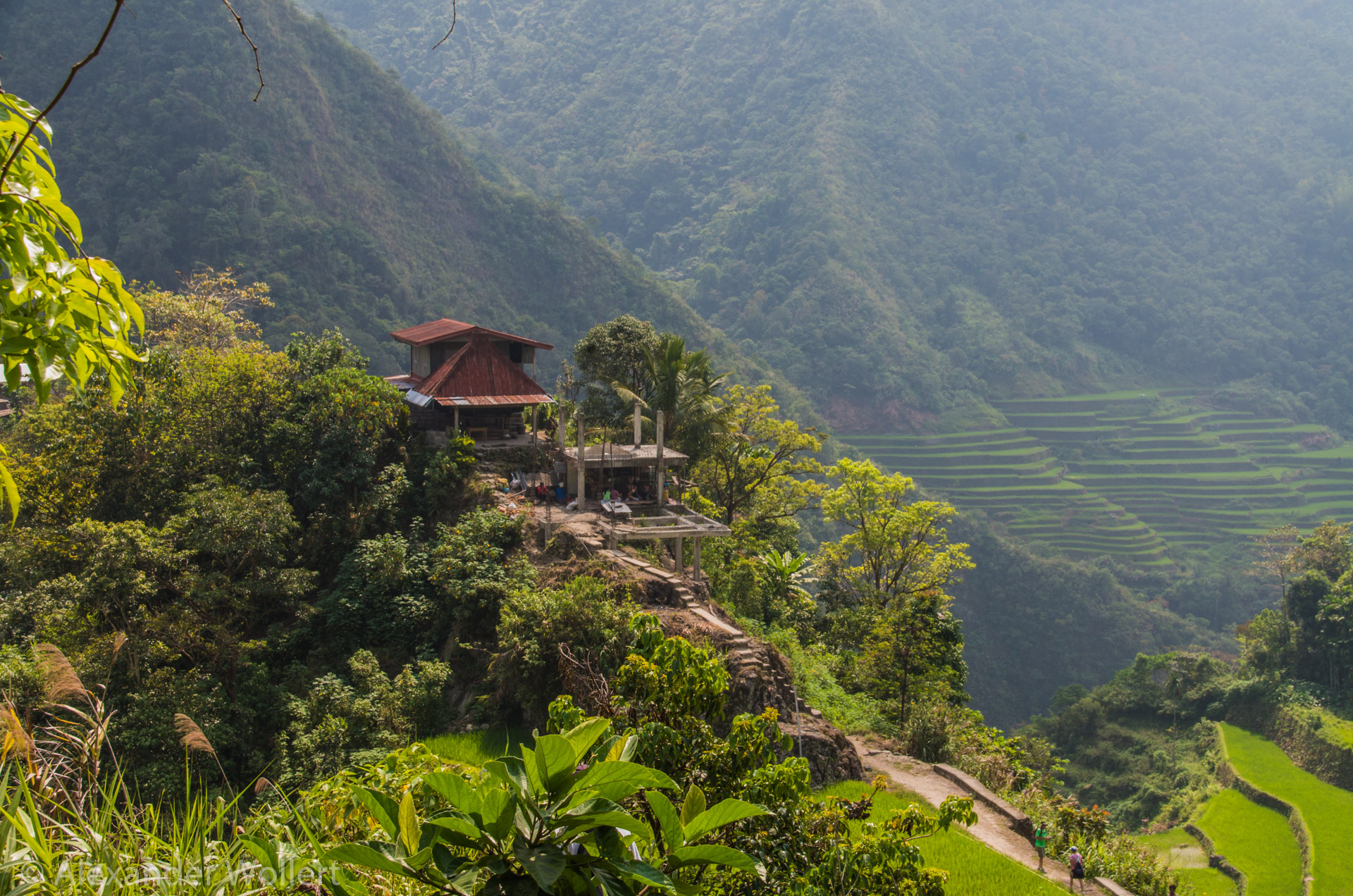


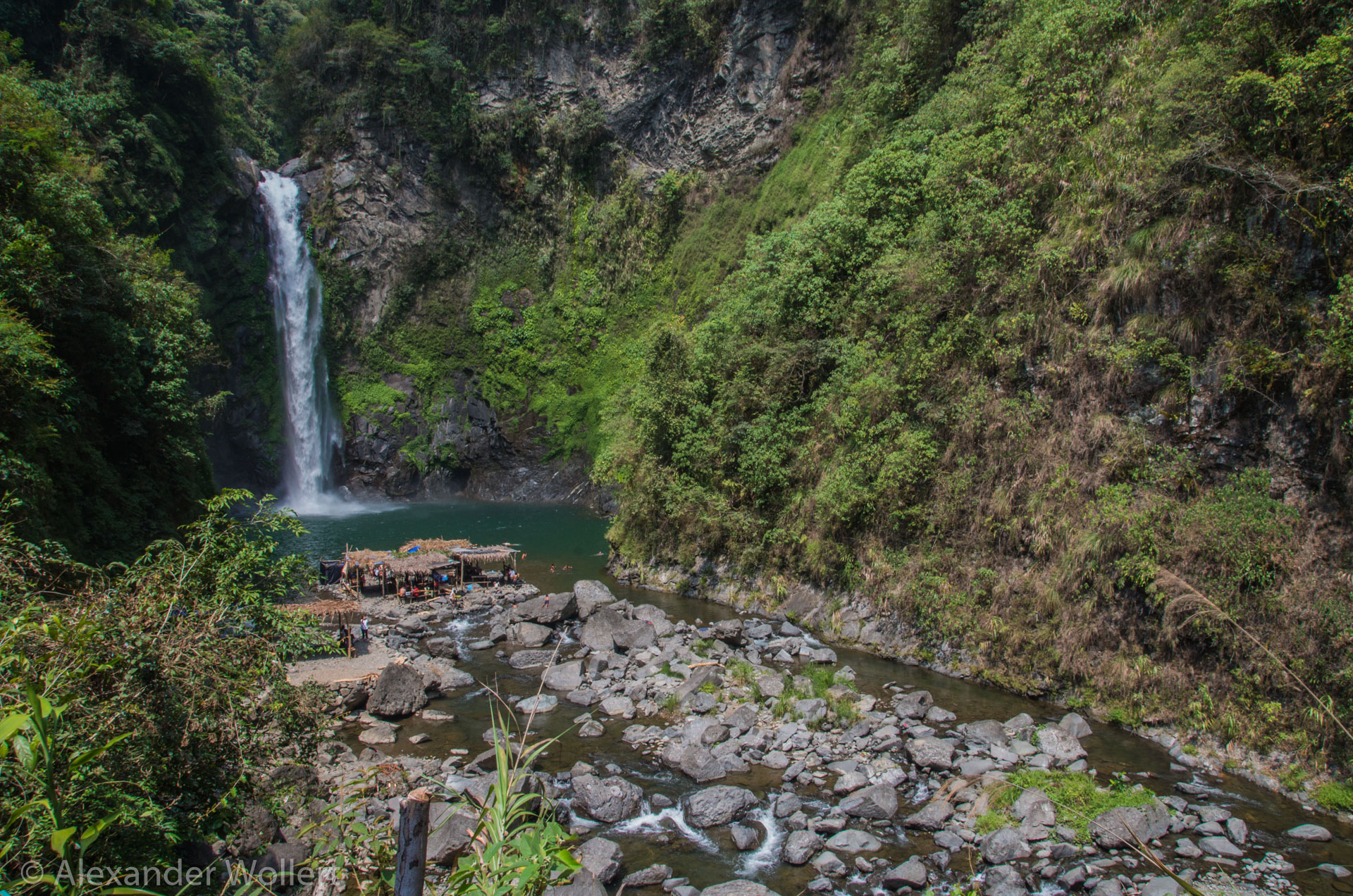


Together we fought our way up the Batad terraces until we finally arrive at a saddle where yesterday’s Trycicle rider is already waiting for us to drive us back to Banaue. With the rickety sidecar motorcycle, however, we still have to fight our way up the mountain to a pass. The driver fears that we could tip over at the back because it’s so steep and asks us to lean forward to shift the weight of all of us. Which obviously works because we all didn’t die. The route was tough as well, everywhere you could see debris on the unfinished road that seemed to have come from further up. Frequently!
In Banaue we met the French women again and enjoyed the chat, but then went back to the place. We bought bananas at the market and discovered that there were bakers in the Philippines who offered unexpected red baked goods that didn’t taste bad at all.
